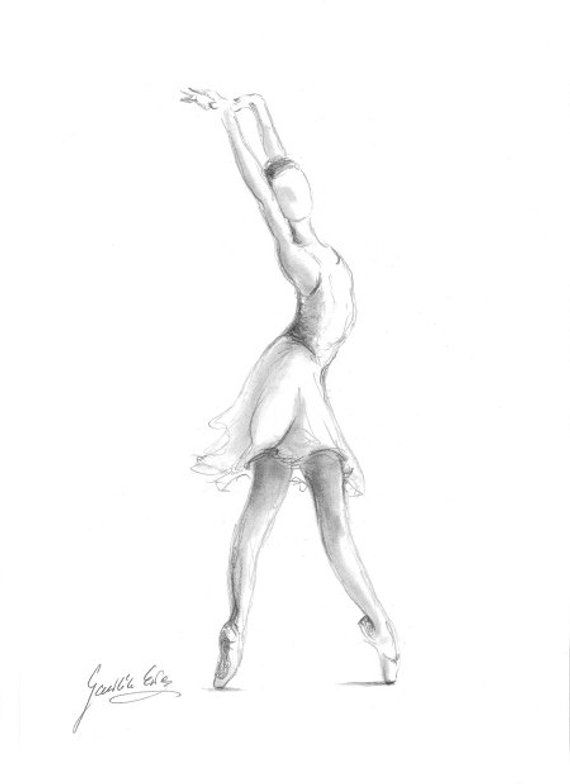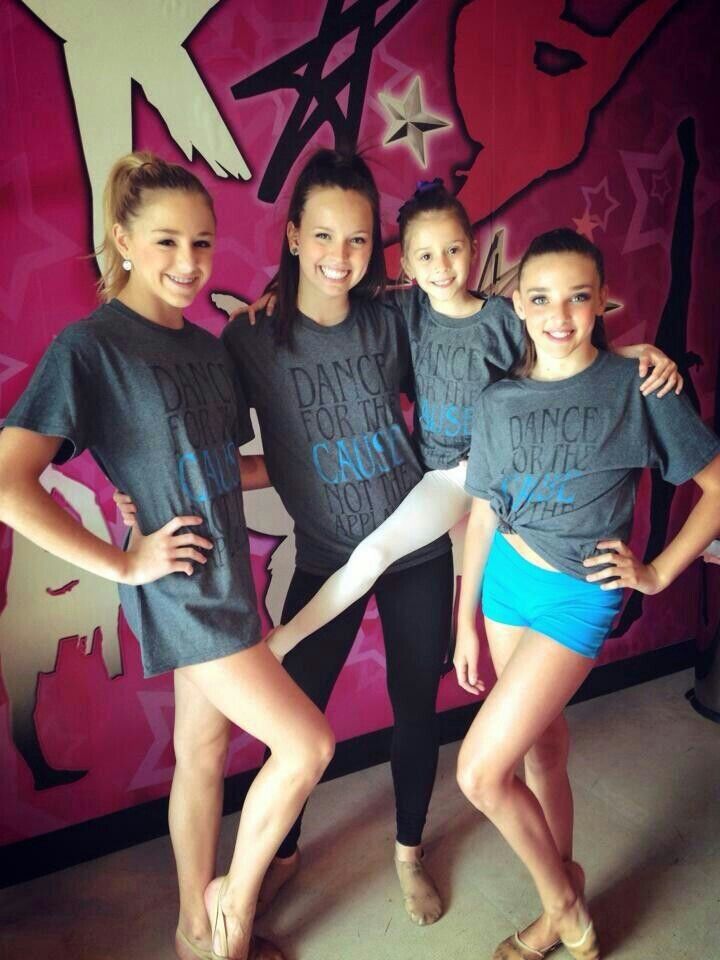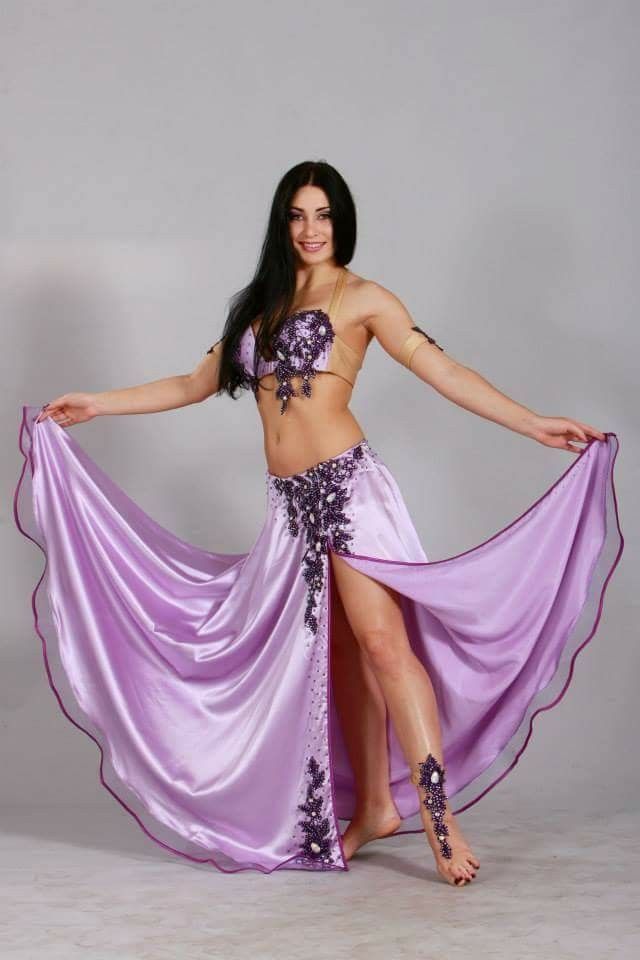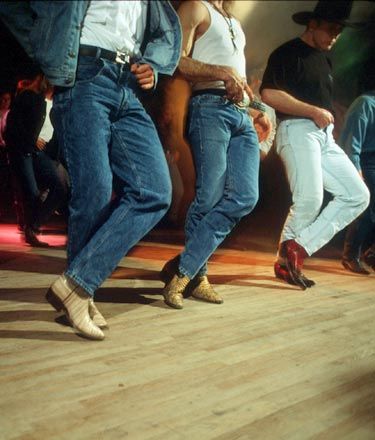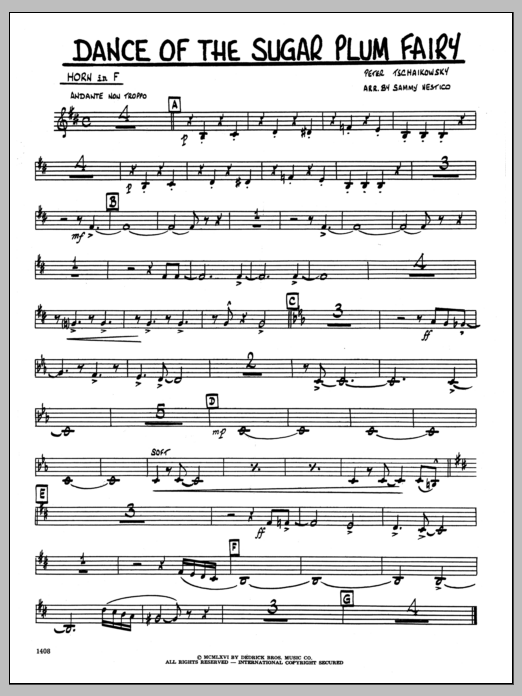How to pole dance in heels
Guide to Dancing in Heels [Pole Dance Lessons]
There’s no feeling like trying on your first pair of pole heels. When you first stand up, you feel a certain kind of empowerment – and perhaps a little wobbly uncertainty – but there’s no denying that there is a definite appeal to the way pole heels lengthen your lines and make you look taller.
Even if you’re already tall, learning how to dance in heels makes you feel like an empowered goddess, ready to take on the world one step at a time.
Whether you’re a pole beginner or a long-time pro, walking in your first pair of pole heels is an exhilarating and sometimes nerve-wracking experience. Suddenly, every exotic heel video you’ve seen looks that much more impressive.
Of course, how you feel can have a lot to do with how you choose your heels. Platform heels feel nothing like their single-sole cousins – in fact, they’re quite possibly one of the most comfortable heels to dance in.
If you’re just starting out with dancing in heels, we recommend opting for a 6” height. Keep in mind, the height you purchase is referring to the heel, not the platform.
If you want to learn more about buying your first pair of pole heels, check out our handy guide on Choosing Your Heels, where we talk about sizing, style, material, height, and much more.
Slow Walk Exercise
Before you learn how to dance in heels, it’s important to learn how to walk. Baby steps!
Dancing in heels is all about your posture and how you shift your body weight. Many of us have a tendency to look down when we first try on our heels. This helps us get a visual reference for the new feeling, but it doesn’t help your body stay upright.
Looking down will only throw off your balance, so keep those shoulders back and head up!
Try out this exercise:
- Align your body; head in line with the shoulders, shoulders in line with your hips, and your hips in line with your feet.
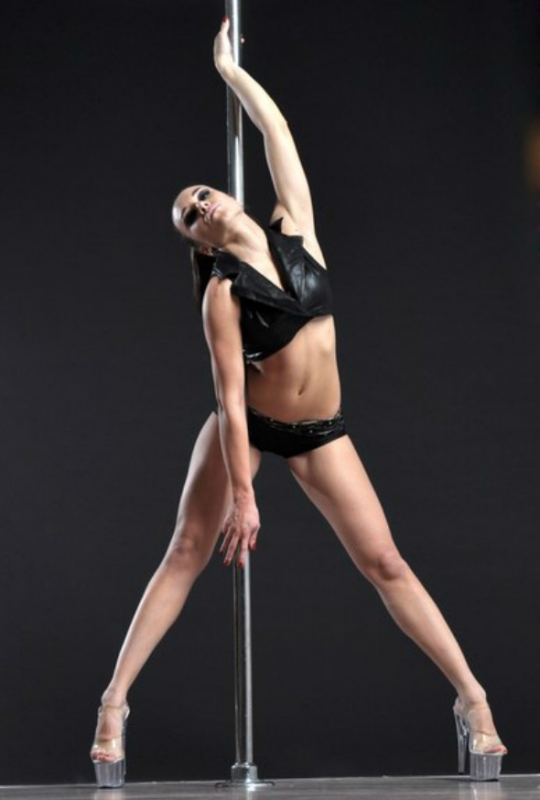
- Take hold of your pole, or a chair, or whatever you have around you that you can circle around.
- Take a firm step forward with one foot. As you do so, shift your hips to center your weight on your front foot.
- Using the front of your platform, drag your back foot along the ground at an even, slow pace and place it firmly in front of you. Again, as your foot comes forward, shift your hips to center your weight on your (now) front leg.
- Repeat!
As you go through this exercise, you should feel your hips shifting from side to side as you shift your weight. Take the exercise at an even, slow pace until you feel comfortable letting go of the pole.
When you feel comfortable enough to let go of the pole, walk in a straight line from one end of the room to the other, continuing to practice the hip-sashay movements.
While this will help you ace your “sexy walk” in pole heels, it has a practical advantage as well, helping you attain the balance necessary to learn how to dance in heels.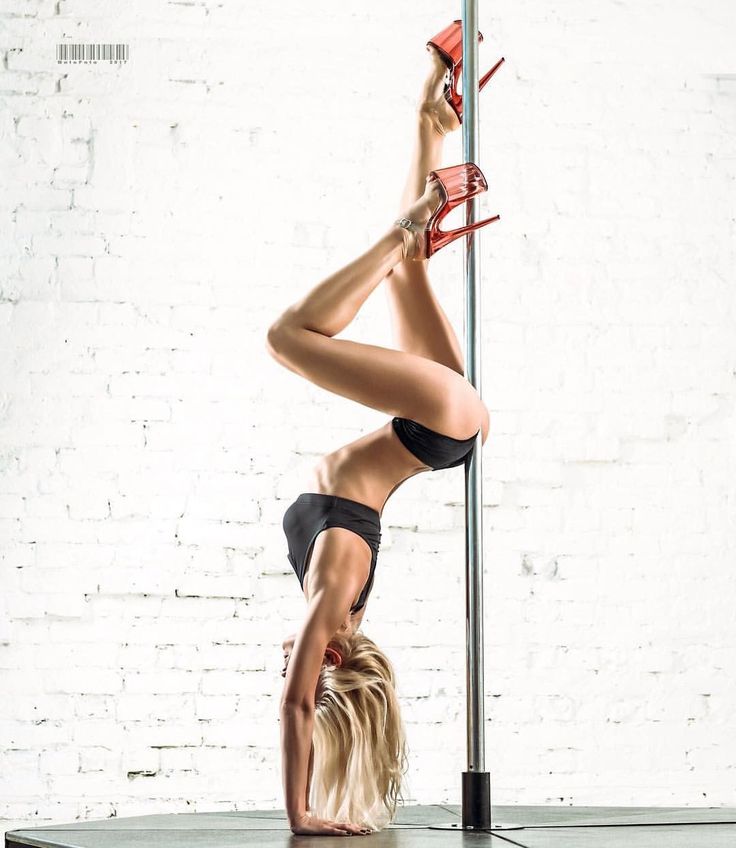
Once you feel comfortable enough, you can try speeding up your pace until you are at a steady, brisk walk.
If you’ve seen our Anatomy of a Pole Dance Heel article, then chances are, you already know the wonderful things a pole heel is great for.
Then you also know how wonderfully comfortable pole heels are, and how they are specifically built for pole dancing, while non-platform (single sole) non-pole heels are not ideal.
If you haven’t seen it, then take a moment to check it out!
Learning how to dance in heels is not a difficult hurdle to overcome, but it certainly is rewarding.
Below, we are going to walk through a few key points about learning how to dance in heels, and then we will take you through a few exercises to help you get used to several core motions you will venture into with your pole heels.
Love pole and want more of it in your life? Subscribe to PolePedia's newsletter and receive pole guides, handbooks, fun articles, and pole dance news right to your inbox.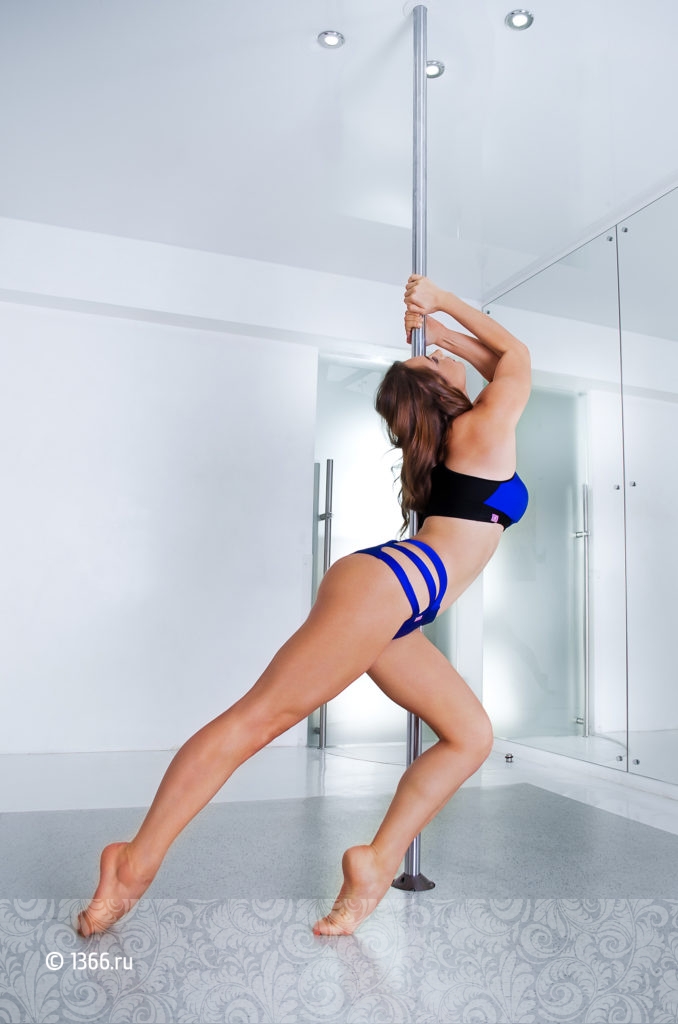
You've been successfully subscribed to the PolePedia newsletter - welcome to the pole family! You should receive a welcome email shortly. If not, check your spam or promotions folder, and be sure to add [email protected] to your safe senders contact list 🙂
Subscribe
1. Your Center of Balance
You’ve added several inches of height to your own, which means your center of balance will be different. It can feel like you’re wearing stilts – and give you a new appreciation for people who wear stilts.
Keep your shoulders back and your weight firmly on the best anchor point, whether that anchor is the foot on the ground or the pole you are holding onto. This will help you keep your balance considerably.
2. Using Your Heels on the Pole
Pole work is entirely possible with heels!
Just be aware that the style and material of the pole heel you wear can affect how you pole.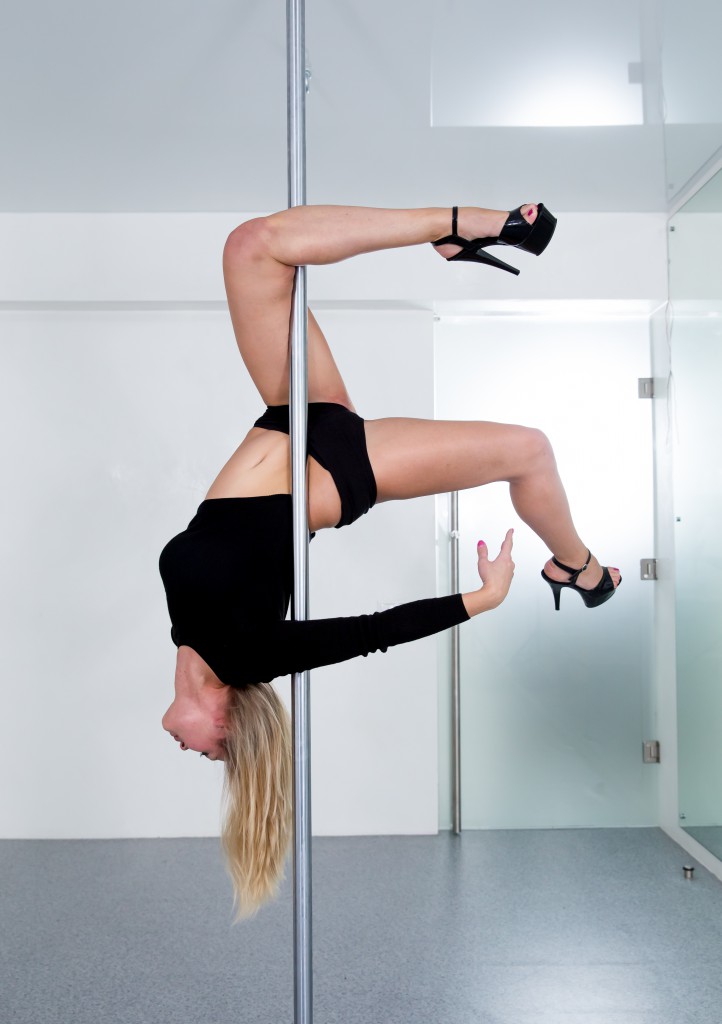 Your heels will see most of the pole contact on the shank – the hard, plastic piece between the platform and the heel so expect any decorations like glitter or pleather to wear away with use over time.
Your heels will see most of the pole contact on the shank – the hard, plastic piece between the platform and the heel so expect any decorations like glitter or pleather to wear away with use over time.
3. Patent is Your Friend
Patent is a shiny, plastic-like material that comes on many pole heels. This material will help you stick the pole without any trouble.
Depending on the type of pole heel you are wearing, this can give you more options when doing certain moves. For example, wearing sticky patent boots will help you accomplish Cupid – pressing the patent material side against the side of the pole and will help you stick.
Typically, the clear plastic material is less sticky than the shiny colored material.
In some cases, you may not want extra stick as it can make you too grippy on the pole, so take that into consideration when you are deciding which pair of heels you want to wear.
We recommend having a pole nearby for these exercises, but you can do them without one – just make sure to have a chair or something else nearby that you can hold onto.
We recommend having a pole nearby for these exercises, but you can do them without one – just make sure to have a chair or something else nearby that you can hold onto.
Dancing in Heels – Exercise One: The Stand
- Wearing your heels, kneel down next to your pole on both knees. You should be slightly angled from the pole to give yourself room on one side as if you came down onto your knees from a basic spin.
- Shift your weight onto one leg. Lift your other leg up and set your foot down on one side of the pole.
- You can use your hand to brace yourself on the leg that is now up. Shift your weight into this leg and lift your other foot firmly onto the ground, on the opposite side of the pole.
- The hand that was on your knee can move to the pole for balance. Choose the side that gives your body the most room and bring your butt up as high as possible, dipping your head low.
- Arch your back and bring your head up, letting yourself rock gently onto the curved outsole of your heel as you shift your weight.

This should be one fluid motion from the floor to standing. Practicing this motion will help you get a better feeling of rocking onto the curved outsole while your balance is actively shifting from forward to back.
Dancing in Heels – Exercise Two: The Sweep
- Standing next to the pole with one hand firmly grasping it for balance.
- Walk around the pole a few times to get into the motion.
- When you feel comfortable, step with your inside foot and shift your weight onto that foot. Again, holding onto the pole, sweep your outside foot as far out as you can, dragging the platform along the floor, then sweep back in, allowing the momentum to carry you back into the pole.
Practice this motion a few times and get the hang of it. This will help you get used to the shift in balance as you extend one leg far from your body.
The lower you lunge as you sweep your leg out, the more extended you are, but the more momentum you can gather to carry you back in, making it an excellent move to add some flair to your routine and the prime time to transition into a pivot or another spin.
While these exercises will surely help you feel comfortable in your new heels, there’s nothing better than practice.
Do some basic spins and try out some simple pole tricks in your heels every time you put them on – before you know it, you’ll be expertly wearing your new heels and dazzling your pole sisters with how quickly you took to them.
What is your favorite thing to do in heels? Let us know in the comments below!
Transitioning From Bare Feet To Heels For Pole Dancing – Pleaser Shoes
Bare feet is a great way to start pole dancing. You can feel both the floor and the pole, it’s easier to learn and practice new moves, and you don’t have to worry about balancing. Plus, pole dance is already a major workout, and adding heels makes it more strenuous.
However, there comes a time in every pole dancer’s life when you want to start wearing heels. Whether you want to up the glam factor, get a better grip on the pole, or embrace a new challenge, Pleaser has the perfect shoes for you. Find the shoes that make you feel like a queen for pole dancing, pole fitness, or stripping.
Find the shoes that make you feel like a queen for pole dancing, pole fitness, or stripping.
The Benefits of Wearing Heels For Pole Dancing
Heels have many benefits for pole dancing. First and foremost, they help you look and feel super sexy! Don’t underestimate what heels do for your style and confidence. They elongate your legs, improve your posture, extend your lines, and add flair to your routine.
Pole dancing heels are specially constructed to make dancing easier. The angled heel and one-piece shank provide support and keep your weight distributed. The front sole of the shoe is angled to help with rocking forward and spinning. Padded lining provides comfort for long nights on your feet.
Pole dancing shoes made of patent leather add grip, making it easier to climb and hold the pole. Boots are an especially good choice if you need to improve your grip, since there’s more fabric than on a sandal. Be aware the pleather shoes actually have less grip than skin, making them less ideal for pole work. They are great options for floor work, though, because they won’t stick to the floor as you sweep your legs.
They are great options for floor work, though, because they won’t stick to the floor as you sweep your legs.
Platform heels are heavy, which means they add a nice counterweight to your body. This makes inversions easier, adds momentum to your spins, and helps balance your layouts. While it may take you a little while to get used to the extra weight, it ultimately helps with your tricks!
Choosing the Right Pole Dancing Shoes
Just like any sport, you need specialized shoes for pole dance. You don’t want to wear just any heels; pole dancing shoes are made for the rigors of dance and floor work. They have a one-piece base so the heel doesn’t snap off, and they provide extra support. The insole and footbox are even for clean lines, and so they don’t get caught on the floor or pole. For height, start with heels that are about 6”. Once you master your techniques, you can move up to those 10” skyscrapers.
If your routine involves spins and twists, make sure you get a shoe with straps. You don’t want your shoe to go flying! Delight-608 heels are one of our best-sellers - and for good reason. These clear platforms combined with clear straps give the illusion of being barefoot with the added benefits of wearing heels. The 6” heel and 1-3/4" platform really make your legs look long and sleek.
You don’t want your shoe to go flying! Delight-608 heels are one of our best-sellers - and for good reason. These clear platforms combined with clear straps give the illusion of being barefoot with the added benefits of wearing heels. The 6” heel and 1-3/4" platform really make your legs look long and sleek.
If you want something edgy, try the Delight-1020. These boots are good pole shoes for beginners because they provide support to your ankle. They have a 6” heel and 1-3/4" platform. They’re made of black patent leather, which is great for gripping the pole. The laces add to the style of these shoes, but an inner zipper makes them easy to take on and off.
If you really want to glam it up, the Adore-1017SRS is your girl. These shoes are bright and flashy, with fringe that will be flying with each spin. The heels are a little higher at 7” with a 2-3/4" platform. These shoes won’t have as much grip because of the fringe, so be prepared. However, they’re great for dancing and floor work.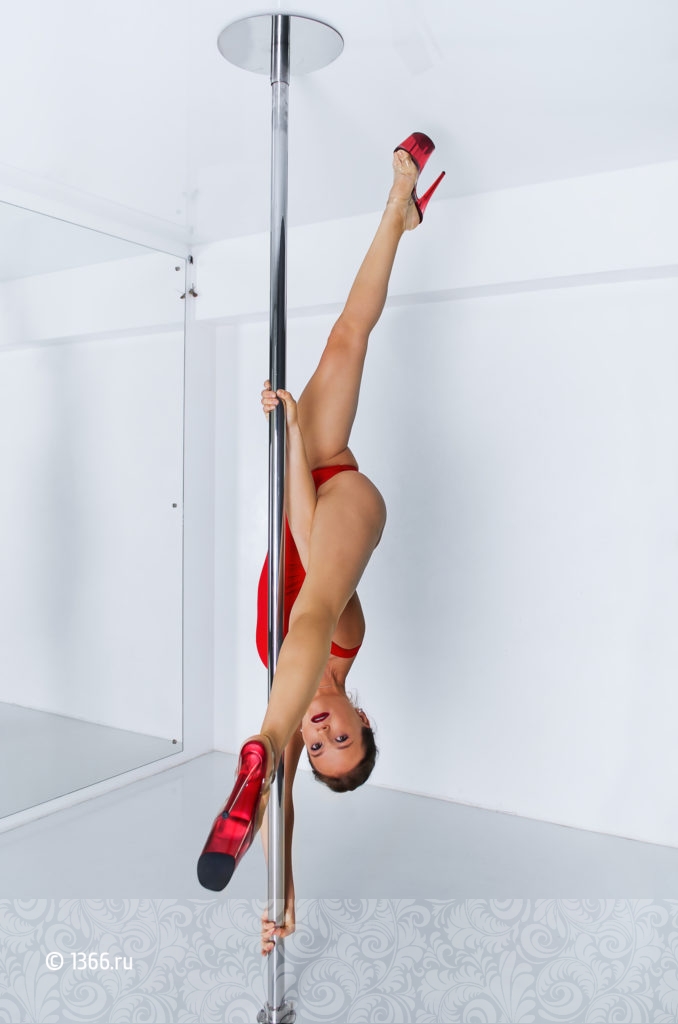 Hit those heel clacks with confidence!
Hit those heel clacks with confidence!
Breaking In Your New Pleasers
Despite being sky-high, Pleasers are very comfortable to wear! The trick is that you need to break them in. Start by wearing your shoes around the house in short increments. Build up the time you wear them as they get more comfortable and stretch to your feet.
A trick to getting a custom fit from the start is to warm up your shoes with a hairdryer set on low. Do not get them too hot! When you put on the warmed-up shoes and wear them for a little while, they’ll mold to your feet as they cool.
To help you get used to your new shoes, practice walking around the pole and doing floor work. Platform heels are heavy, and you’ll have to adjust to their added weight as you move your legs. You’ll also need to build up your leg and ankle strength. Once you’re comfortable on the floor, you can start practicing your pole work. Remember, it will take practice!
Most importantly, have fun! Your Pleasers will make you feel sexy and ready to dance, so go for it!
← Older Post Newer Post →
Pole dance what is called heels
Author Ivan Ivanov Reading 29 min Views 13 Published
Turning also requires special clothing.
The best option is shorts and a T-shirt. As in the case of shoes, clothing made from ordinary materials will not work here, as it will slip off and it will not work to perform objects on a pole. Therefore, it is necessary to choose special clothing made of non-slip materials.
Pole Dance is a pole dance that develops plasticity, improves coordination and stretching, teaches you to control your own body, and gives a good load to the muscles. If you are bored to exercise regularly, pay attention to this direction.
In the traditional sense, Pole Dance is a plastic strip, but there is a fundamental difference between them. The elements performed on the pylon have received a different development: they have become a spectacular mix of dance and sport.
Ordinary strip plastic is just sensual body movements, and Pole Dance also gives a good load on the muscles
“Everything depends solely on the person who comes to study and the tasks that are offered to him,” says Victoria.
- If you want to dance, you will dance, but if you are serious, you can do it really professionally.
Contents
- Sports, not striptease: why pole dance is cool
- Pole dance: busting myths
- What is pole dance and how far has it gone?
- About tricks and dance elements
- Who develops pole dance in our country
- What to wear
- Injuries
- Pole dance
- Pole Dance
- Features of Pole Dance
- Pole dance 905 stories
- Types of Pole Dance
- How Pole Fitness Workouts Work
- Elements
- Pole Fitness Benefits
- Pole Fitness Disadvantages
- Pole Dance Contraindications
- Here's what they say about their passion for pole dancing (irecom reviews):
- Pole dance: motivation. Video of the best performances
- Looking for the difference
- Pole dance as a sport discipline
Sport, not striptease: why pole dance is cool
Some contemptuously call it pole dance, where there is no place for decent girls and men, others are sports associated with gymnastics or acrobatics, only on a pylon (or vertical horizontal bar).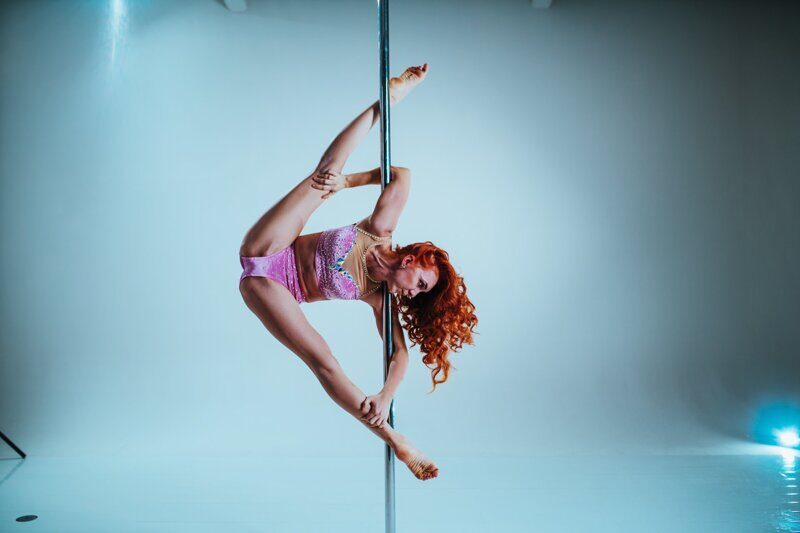
Mysl talked to Victoria Tsybulskaya, who has been steadily developing pole dance as a sport in the Tula region for many years.
“Everything depends solely on the person who comes to study and the tasks that are offered to him,” says Victoria. - If you want to dance, you will dance, but if you are serious, you can do it really professionally.
Pole dance is a young and very democratic direction of dance and sport in Russia. As a sport, it has not yet been officially recognized in our country, and this, probably, in a sense, gives more freedom to all half-dancers. There are different categories, for example, “exotic” is just about dancing in heels (yes, the very ones that everyone thought about), and this “sport” is basically different power tricks.
In both cases, flexibility, stretching, plasticity are needed, but unlike many professional sports, Pole dance welcomes everyone, regardless of age and gender.
Victoria is a choreographer by education, graduated from the Oryol Institute of Culture, worked in variety ballet in parallel with her studies, after graduating from Tula she taught at various dance studios.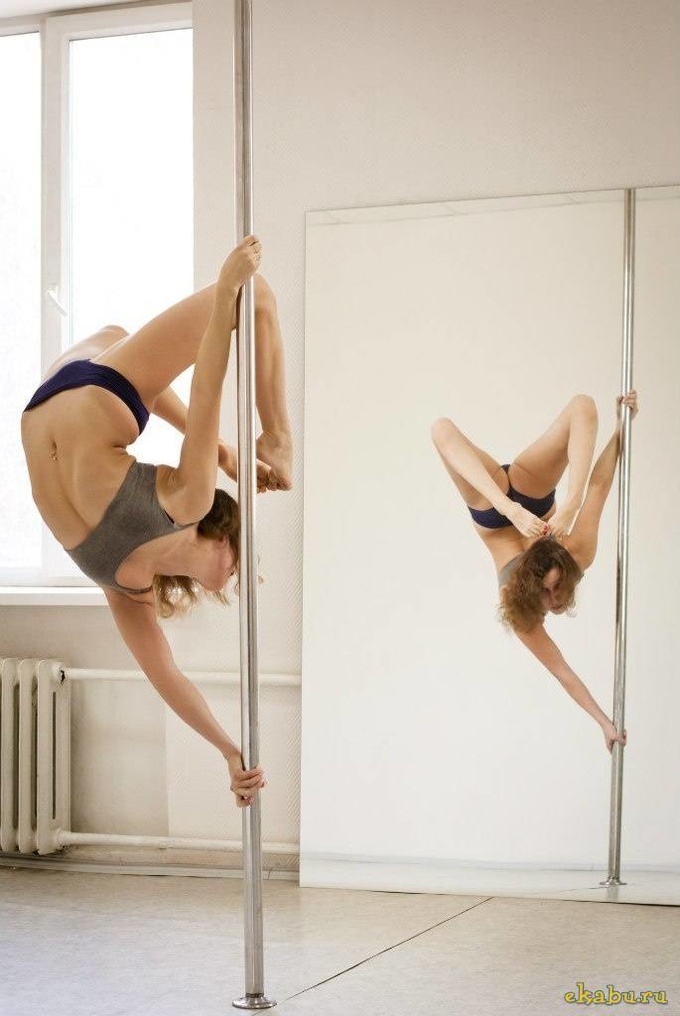
Pilon appeared in his life spontaneously: I saw a beautiful video with a girl on a pole and I wanted the same. Seven years later, she is already a professional athlete and coach, and together with her students, participants and winners of festivals and championships, including the Catwalk Dance Festival and the Amazing PoleChampionship.
This year, for the first time, he took part in the Pole sports Russia 2019 championship, where he took fourth place in the Sports.
– Pole dancing was more of a hobby at first, but after a year of studying, I realized that I was really successful, but more importantly, this is exactly what I really want to do professionally.
Having received a specialized education, she took additional courses and became a coach. But I was not going to stop there and constantly watched videos of various elements performed by eminent dancers, and tried to repeat after them, looking for master classes.
It's pain, it's worn out legs, it's blisters, but the end result has always given me satisfaction for what I could and learned.
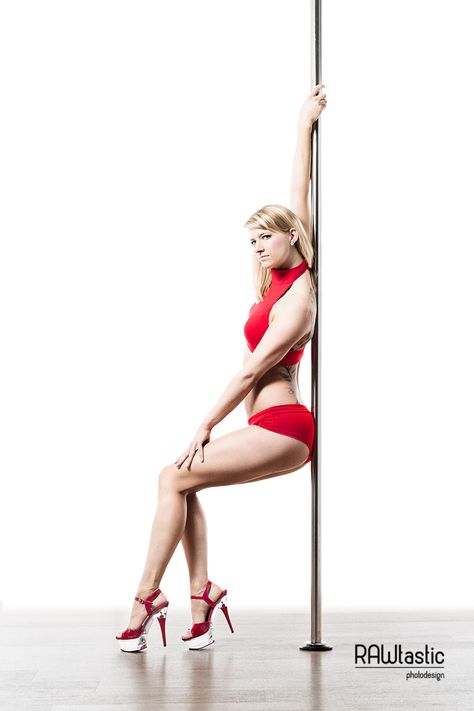
For me personally, pole sport (I will call it that) opened up a whole world of limitless possibilities for the human body. There was a feeling of development of my own physical data, having been doing choreography for so many years, I could not boast of perfect twine and flexibility, and at the age of 25 a new meaning for the development of personality, and later for the development of my students, they opened up to me.
Yulia Kuznetsova is one of Victoria's students. I came four years ago. Like many, I learned about this sport from friends: a friend practiced the pole and offered to try it.
- From the first lesson I fell in love with pole dance and now I can't stop. It is unfortunate that pole lessons are still perceived by many as erotica, striptease is a terrible word. We have to explain to everyone that this is a sport, a great sport, it is strength, endurance, flexibility, that this is not a striptease on a pole.
For me, this is a power sport, it gave me a toned figure, strength, I can now do many exercises better than men who go to the gym.
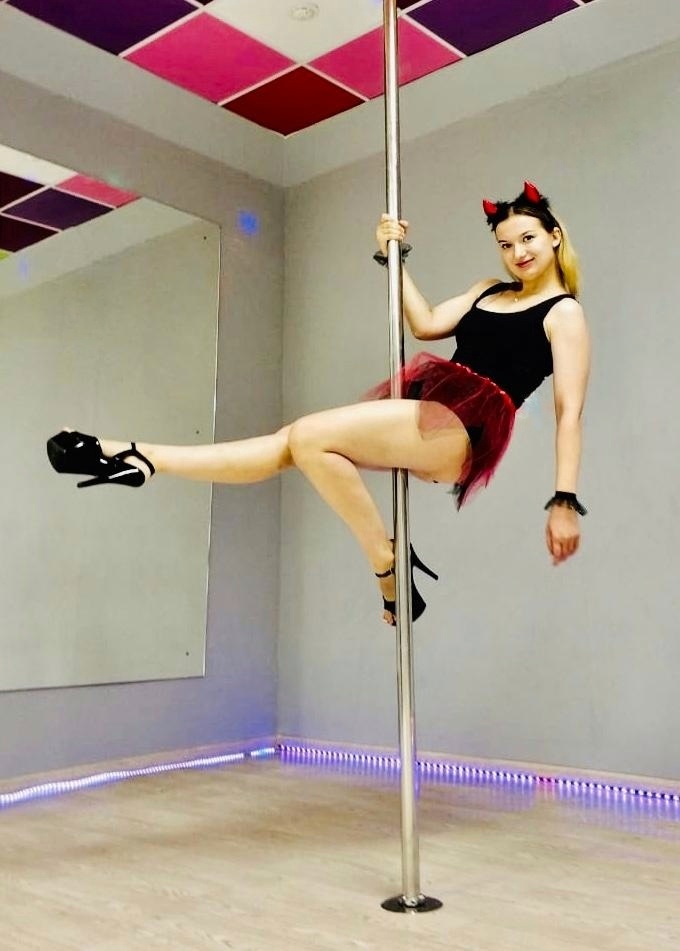
If we talk about the level of development of this sport in Tula, then there are a lot of schools, but it was not easy to find a really professional coach who is constantly developing, finding something new. But in the end I found it,” says Yulia Kuznetsova.
Today, thousands of people practice pole dancing professionally or alone. The big advantage of this sport is that it has no age restrictions, it is never too late to practice it.
– Today, many people prefer pole dance to gym classes. Why? Because in each lesson, when performing elements on the pylon, the load falls on all muscle groups, in addition, flexibility, plasticity and stretching develop. That is, for 1.5 hours of classes, you get everything that you can get in other cases if you take subscriptions to Pilates, fitness and a dance studio.
Age and physical fitness do not play any role in pole dance. At the first trainings, competent classes necessarily include the initial level, general physical training, stretching classes, which in turn helps to prepare anyone who comes to the next load on the tower. In general, I can say one thing, it’s not scary to start pole dancing at any level of training, any training involves physical activity, to which the body gets used to over time.
In general, I can say one thing, it’s not scary to start pole dancing at any level of training, any training involves physical activity, to which the body gets used to over time.
Galina Lugovaya, a 55-year-old girl from Tula, is a clear confirmation that pole dance has no age barriers. Today she is one of the students of Victoria Tsybulskaya. He first came to train in a pole dance group at the age of 51!
- I was sent an invitation to a group from one of the pole dance schools on a social network. The fact that the pylon rotates, I learned only at the first training session. Before that, I had never heard of this sport, which immediately struck me with its beauty. Only age stopped me. But, having tried once, I realized that I could handle it, although it was not easy.
Today, for me, pole dance is, first of all, a complete reboot, an escape from stress.
No matter what happens in life, no matter how serious problems accumulate, training makes you disconnect from everything, fully concentrate on performing the trick. After that, you leave with a slight fatigue in the body, a bright soul and in a good mood. Excellent physical shape for me is just an added bonus. Now a certain dependence has developed, I can no longer imagine life without training on the pylon. At the moment I train five times a week, three of them under the guidance of Victoria Tsybulskaya. Athletes tend to train with those who are stronger, this gives tangible progress. Vika believes in her students, she helps a lot. Each workout becomes not just interesting, it becomes exciting, you want to practice, come back again and again.
After that, you leave with a slight fatigue in the body, a bright soul and in a good mood. Excellent physical shape for me is just an added bonus. Now a certain dependence has developed, I can no longer imagine life without training on the pylon. At the moment I train five times a week, three of them under the guidance of Victoria Tsybulskaya. Athletes tend to train with those who are stronger, this gives tangible progress. Vika believes in her students, she helps a lot. Each workout becomes not just interesting, it becomes exciting, you want to practice, come back again and again.
A large number of people over 30 flock to the pylon, and this indicates the accessibility and popularity of this address. If we are not talking about sports achievements, but about training for health, to improve physical condition, then there are no restrictions, only desire and interest. The uniqueness of pole dance is that it is available to everyone, at any age and with any physique, men and women, children and adults.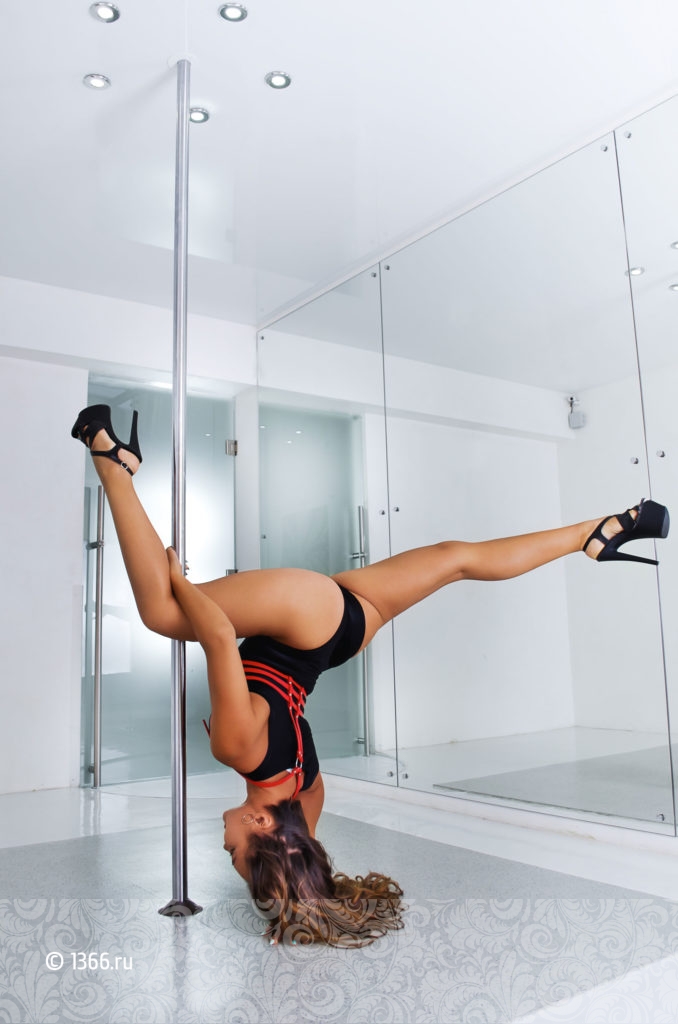 Especially now, when pylon sport for boys is developing, many men also choose this sport for themselves.
Especially now, when pylon sport for boys is developing, many men also choose this sport for themselves.
In fact, stereotypes aside, this is a very masculine sport. They have their own set of techniques, something close to training. It is enough to find on the Internet examples of male performances in professional pole dancing competitions, and you will understand that it is really cool, difficult, strong and exciting.
- Although pole sport is not an official sport, there are federations all over the world. They hold championships with the aim of recognizing this sport as official and Olympic, and in any case, it's a matter of time, says Victoria. – For us, pole dance athletes and coaches, it is very important to convey to everyone that the pole is a sports equipment that has its own standards, special coating, diameter and height. We train in shorts and T-shirts in accordance with safety regulations, as we need the grip of the skin with the stick. Pole sport has nothing to do with club activities, it is physical work associated with sports acrobatics.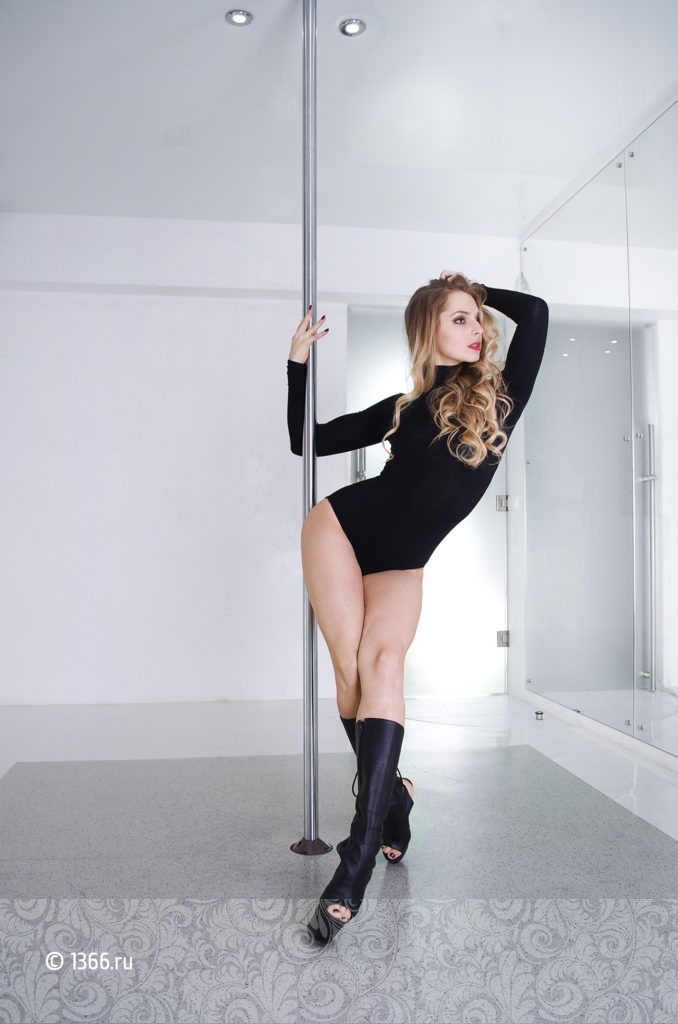
In Tula, many dance studios now hold classes on the pole. But how to choose the one where they really teach? First of all, the studio must have professional equipment - two-phase towers (static and dynamic). Some schools, unfortunately, are mistaken and instead of a tower they put an ordinary pipe, but it is impossible to fully master this sport and understand all its beauty. Secondly, the professionalism of the coach: if he and his students regularly participate in various competitions and festivals, it means that he strives to be fashionable. Now many schools offer free trial classes so that a new participant can understand, not in words, but in practice, what pole dance is.
In order to disassociate itself as much as possible from all associations associated with striptease, Poldance was given the original name "Air-sport balancing on a vertical polished mast" (at least that's the fullest name I've heard). The category of air sports equipment includes sports that use air suspension.
The most popular are canvas (two long pieces of fabric), a ring (generally speaking, a large hula hoop-like hoop), lazo (a thick fabric strap in the shape of a bow). And since you can hang anything, you can also rope, chains, belts, all kinds of forged structures (cubes, for example). The pylon is classified as an air sport due to the fact that most of the elements are performed at a height, that is, in the air. So not a pole).
Pole Dance: Mythbusting
From time to time, posts dedicated to poledance appear on Pikabu, which are judged by the degree of content marketability. I would like to talk about the underside of this action and, most importantly, talk about the main misconceptions that plague this sport.
A little about me: I am not a coach, not a gymnast, not an artist, but a person who has been doing this for himself for three years, so the story will take place from the point of view of “expectation - reality”. “.” Strongly do not swear - the first publication.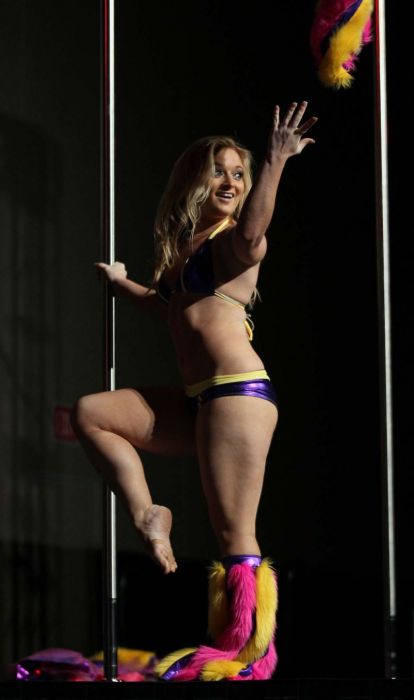 If there are Poldens among the readers, add information in the comments 🙂 So, there is a lot of text, little time, come on!
If there are Poldens among the readers, add information in the comments 🙂 So, there is a lot of text, little time, come on!
In order to disassociate itself as much as possible from all associations associated with striptease, Poldance was given the original name "Air-sport balancing on a vertical polished mast" (at least this is the most complete name that I heard). The category of air sports equipment includes sports that use air suspension. The most popular are canvas (two long pieces of fabric), a ring (generally speaking, a large hula hoop-like hoop), lazo (a thick fabric strap in the shape of a bow). And since you can hang anything, you can also rope, chains, belts, all kinds of forged structures (cubes, for example). The pylon is classified as an air sport due to the fact that most of the elements are performed at a height, that is, in the air. So not a pole).
Myth 2. Well, striptease, right? They are naked, everyone is ashamed in plain sight!
Half-dancers are no more naked than runners.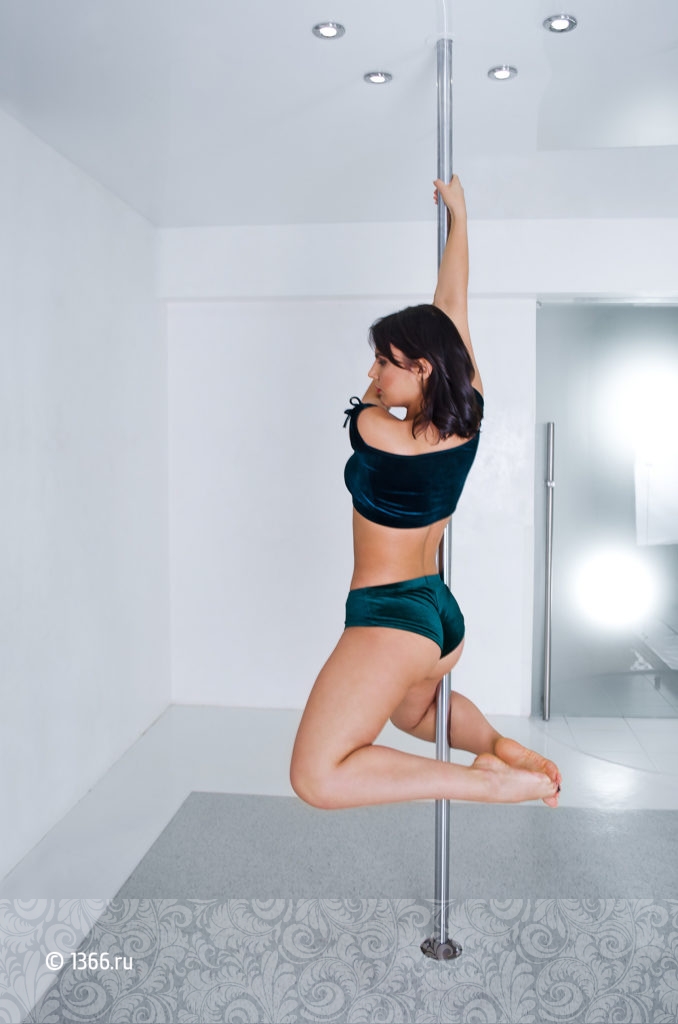 First of all, the minimum amount of clothing is due to the fact that the pole has to be fixed with something, and this is some kind of skin. The more the surface of the body is open, the larger the adhesion area. Depending on the trick, you can grab the pole with your hands (palms, elbows, armpits), legs (inner and outer thighs, below the knee, feet) and even shoulders (under load). You can do anything at training, even in field shorts and a summer T-shirt, the main thing is to be comfortable. At competitions, the appearance of an athlete is clearly regulated. Here is an excerpt from the rules of the International Sports Polo Federation (IPSF):
First of all, the minimum amount of clothing is due to the fact that the pole has to be fixed with something, and this is some kind of skin. The more the surface of the body is open, the larger the adhesion area. Depending on the trick, you can grab the pole with your hands (palms, elbows, armpits), legs (inner and outer thighs, below the knee, feet) and even shoulders (under load). You can do anything at training, even in field shorts and a summer T-shirt, the main thing is to be comfortable. At competitions, the appearance of an athlete is clearly regulated. Here is an excerpt from the rules of the International Sports Polo Federation (IPSF):
13.1) Costumes must fit the figure; Intentional removal of costumes and manipulation of them with erotic overtones is prohibited.
13.1) Women's costume may include the following elements:
- with belts with a diameter of at least 20 (twenty millimeters)
- with a cutout of at least eighty (80) millimeters from the collarbone
- sports shorts, tights or sports shorts that are apparel suitable for gymnastic exercises and in accordance with the regulations of the International Gymnastics Federation (FIG) The bottom of the suit must cover at least half of the buttock area Shorts and panties must be at least eighty (80) millimeters from the navel
13. 2) Women's costumes must NOT include the following elements:
2) Women's costumes must NOT include the following elements:
- Transparent clothing that does not cover the chest or pelvis
- Heels or shoes not intended for sports or dancing
13.5) that does not comply with the rules, or in an image that evokes obvious erotic associations (i.e. obscene caresses of the body, deliberate touching of the chest and groin area, focusing on the buttocks area, dance movements (swaying) of the chest or buttocks in an obscene form (note that the above does not include body waves).
As you can see, everything is strict: no "sexy schoolgirls" or "wild secretaries". Only sports, only hardcore.
Myth 3. If you are in the middle of a dance, then you are 100% tanned, slender, long-legged gazelle with a figure like on advertising posters.
So I thought when I signed up for the first lesson. But the reality turned out to be much harsher than the Instagram videos that inspired me:
- If you weigh 80 kg with a height of sixty meters, then you will not be able to fall into the category "50 kg and eighty meters" if you do not take care of your nutrition (actually, just like any other sport).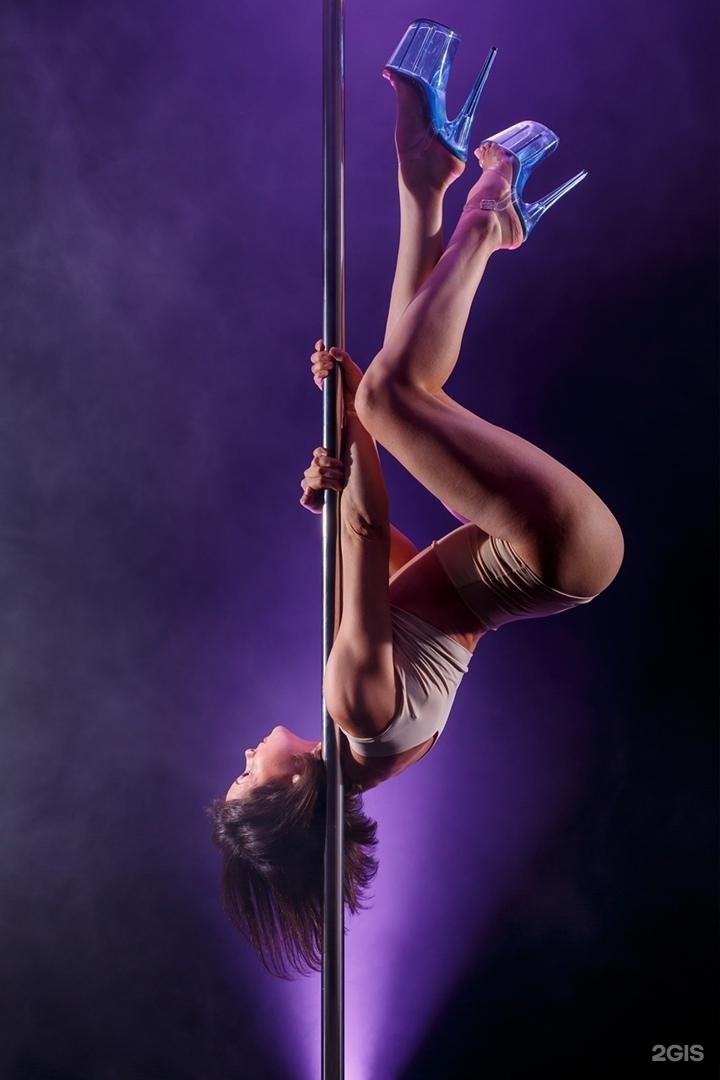 The body becomes more prominent, tense, but radically HOBA and I am a princess, this will not work. BUT! People go to middance not only and not so much because of the goal of body shaping, but because of the desire to expand the capabilities of their body, and acrobatics is best suited for this. But in terms of figure, instead of going down a size, my shoulders are a size up. Although it does not bother me much 🙂
The body becomes more prominent, tense, but radically HOBA and I am a princess, this will not work. BUT! People go to middance not only and not so much because of the goal of body shaping, but because of the desire to expand the capabilities of their body, and acrobatics is best suited for this. But in terms of figure, instead of going down a size, my shoulders are a size up. Although it does not bother me much 🙂
- "I'm fat, I won't live" - Nonsense. Yes, working with your weight is more difficult, but not impossible. And then, weight is not strongly related to flexibility: having a weight of 53-56 kg, I have never sat on a rope in my life, and for this I will have to spend more than one year in daily stretching classes. At the same time, I know people who weigh 20-30-40 kg more than me, who can easily sit on the splits or raise their legs above their heads. And they have access to elements that I'm, oh, so far away from, simply because I'm less flexible than a log.
- Concussions. They are everywhere. For the first six months you walk blue from head to toe, after a couple of years less, but no, no, and you will fly with your foot / hand / head towards the pylon. In addition to bruises, there are also calluses (especially on the hands, which do not go away for years), abrasions, all kinds of abrasions ... I'm not talking about really serious injuries. It's hard to be like that very long-legged doe when she crawls from training, while looking like a victim of a maniac.
They are everywhere. For the first six months you walk blue from head to toe, after a couple of years less, but no, no, and you will fly with your foot / hand / head towards the pylon. In addition to bruises, there are also calluses (especially on the hands, which do not go away for years), abrasions, all kinds of abrasions ... I'm not talking about really serious injuries. It's hard to be like that very long-legged doe when she crawls from training, while looking like a victim of a maniac.
Myth 4. Dancers only dance in heels.
Yes, yes, those same mythical “fucking rhinestones” shoes, which some especially elegant ladies elevate to the rank of “sexiest shoes” and are ready to limp with them both at the feast and in the world. In fact, there are several directions in the half-dance, on which both the shoes and the clothes of the half-dancer depend. Here is an example of a distinction:
- Plastic bar (exotic). Yes throw! You thought, and you were partly right. There is a place for both high heels (they are called "straps"), and more revealing outfits.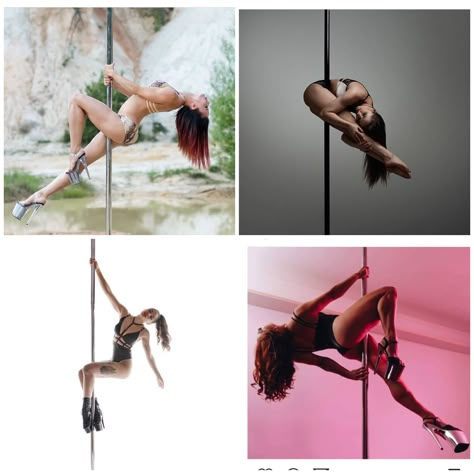 Most of the tricks are performed on the ground (down on the ground). It would seem: it’s beautiful to walk along the pylon in high heels - what a deal! But. here you need to have excellent stretching and flexibility, and no less strength.
Most of the tricks are performed on the ground (down on the ground). It would seem: it’s beautiful to walk along the pylon in high heels - what a deal! But. here you need to have excellent stretching and flexibility, and no less strength.
- Polo Sport (Fitness). Shoes are not needed here, except perhaps special Czech shoes. The basis of semi-sport is high-altitude tricks that require good strength training. This direction is as close as possible to circus art - there is a place for somersaults, somersaults and all kinds of complex cliffs and waterfalls.
- Pos Art. Here the focus is on art. Often a dancer creates some kind of image around himself, tells a story with his dance, while both in the stalls and on the pylon itself, the choreography is at the highest level and its meaning in the dance is identical.
Most artists in this genre are actually women. But this does not mean that men should not enter this area - men quickly and easily master power tricks, as well as more risky things (cliffs, somersaults, jumps). Of course, men also find themselves in the exotic (yes, yes, in those very heels), but I have not seen such people among Russian poldens.
Of course, men also find themselves in the exotic (yes, yes, in those very heels), but I have not seen such people among Russian poldens.
I don't usually see public opinion about pole dancing, so I'm wondering what you think about it. If the topic seemed interesting to you, then in the next post I will write about tricks, contests, “how they are generally held”, and the answers to your questions, if any. In the meantime, an atypical half-dance photo with the author of the post 🙂
What can incredibly stress the muscles, skyrocket self-esteem, develop feline grace, plasticity and stretching? What can squeeze everything to the last drop, but force you to load your body over and over again, grinding it to the smallest muscle? This combination of sport and dance, which trains the body and opens the soul, is a complex and multifaceted Pole Dance.
Pole dance - pole dance. A young direction that is rapidly developing all over the world and is gaining immense popularity. The history of its appearance is connected with Indian yoga, when exercises on a wooden stick were practiced, circus art, and the development of the dance industry. It includes several types:
The history of its appearance is connected with Indian yoga, when exercises on a wooden stick were practiced, circus art, and the development of the dance industry. It includes several types:
Pole Sport: power elements and tricks on the pole, various interceptions, racks. The most serious type, distinguished by rather harsh rules in competitions. Pole Art is a dance direction. The performance should have its own image and story that the dancer tells the audience. Exotic Pole Dance is a dance with fewer acrobatic elements. It involves work at posts, requires special shoes with heels. Pole Fitness is a mixed direction. Trumpet tricks and dance packages. Pole Contemporary is a mixture of Pole Dance and Contemporary. This look has become popular in recent years. Doesn't require good preparation. The pylon itself here acts as an additional attribute.
1. MOO TPF - interregional public organization of pole dance and fitness
What is pole dance and how far has it gone?
Many have heard and roughly imagined what it was about, but very superficially.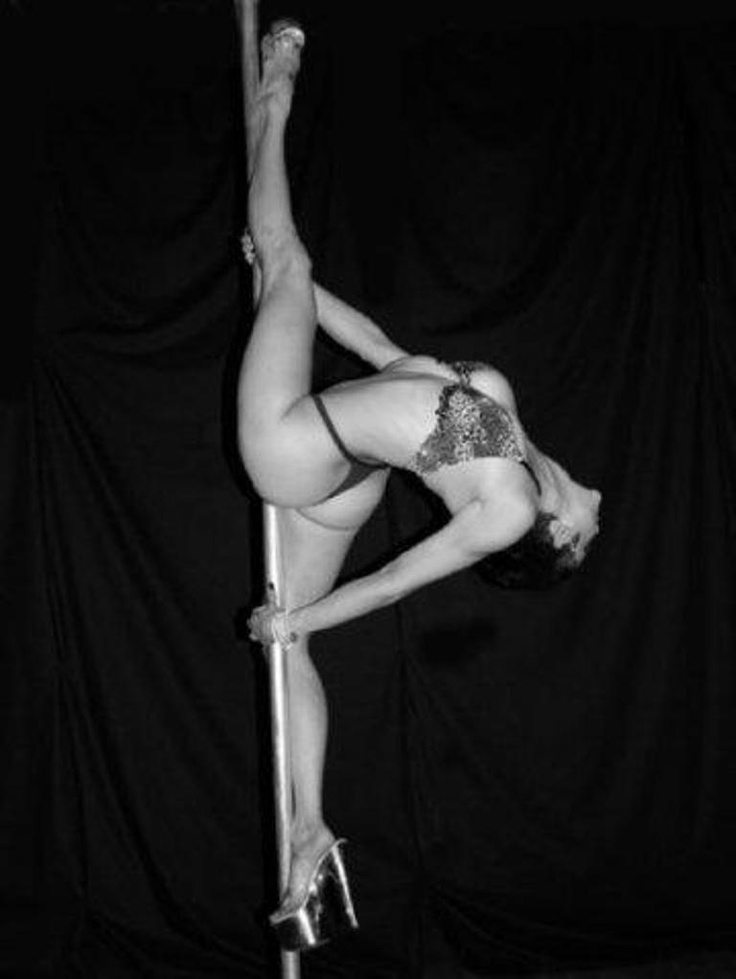 I want to reveal some details, to show that this is not some kind of porn, but quite a decent form of physical activity.
I want to reveal some details, to show that this is not some kind of porn, but quite a decent form of physical activity.
Pauldens, aka pole dance, aka pole dance is when on one or two poles (yes, it happens) a girl or a guy (it's spinning, right?) performs certain tricks, not forgetting about the choreography. Anyway, try to dance and not break your neck =D
Pilots are often confused with strippers. Do not do it. Now Pilon Sport is developing as an independent sports management, with its own refereeing, on special sites. There are mandatory elements, as, for example, in figure skating.
Pole directions are divided into artistic and exotic dance:
- in the first case, the tricks themselves, staging and costumes are important (I remind you that this is not a striptease!) in the second case, the emphasis is on plasticity and eroticism. That is, you are less likely to stretch something yourself, but you need to have charisma and flexibility
About tricks and dance elements
Tricks are performed above 2 meters.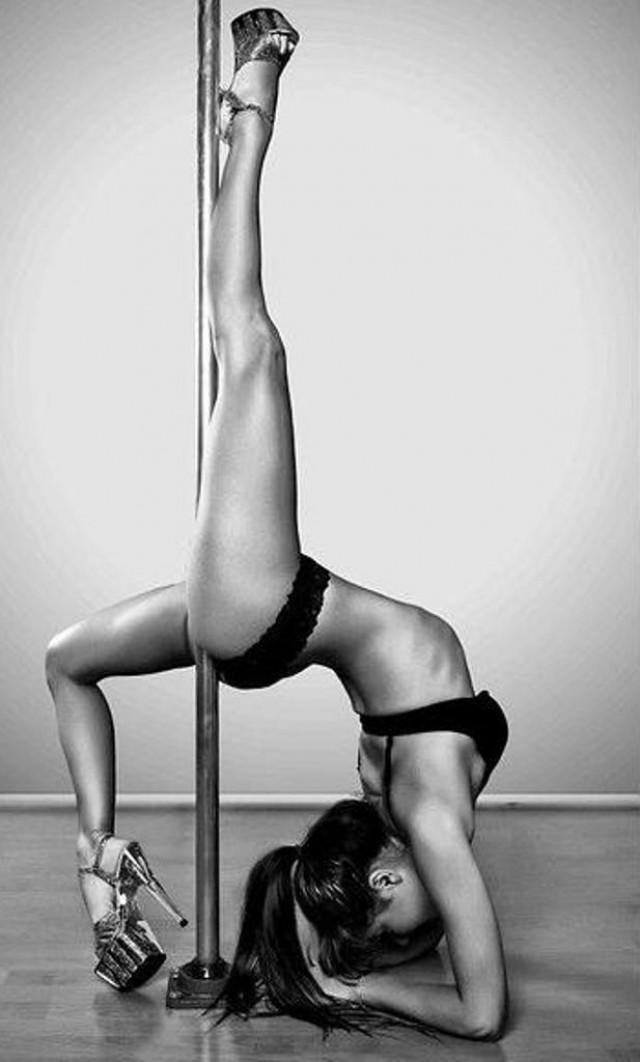 In order not to hit your head on the ground Rotations on a pylon at a height of 1-1.5 meters. Don't fly too far if your hands slip. Plastic can be performed at a level below 1 meter. Sometimes no pole at all
In order not to hit your head on the ground Rotations on a pylon at a height of 1-1.5 meters. Don't fly too far if your hands slip. Plastic can be performed at a level below 1 meter. Sometimes no pole at all
All this requires good physical preparation, stretching and training of the muscles of the legs and arms in general
The best pole is made of polished stainless steel. And it glides well and at the same time there is grip. There are also brass, steel with different coatings and even plastic.
Either a static pole or a rotating (woo-hoo-hoo) pole can be used for performances. Remember the two pylons during performances? Here they are 🙂 They allow you to demonstrate various skills. By the way, pylons are from 3 to 9 meters in height (brrrrr, I would not want to slam the door from there)
Who develops pylon sports in our country
1. MOO TPF - interregional public organization of pole dance and fitness
Russian Federation of Pole Sports and Training
What to wear
There are special shoes for poldens – stripes.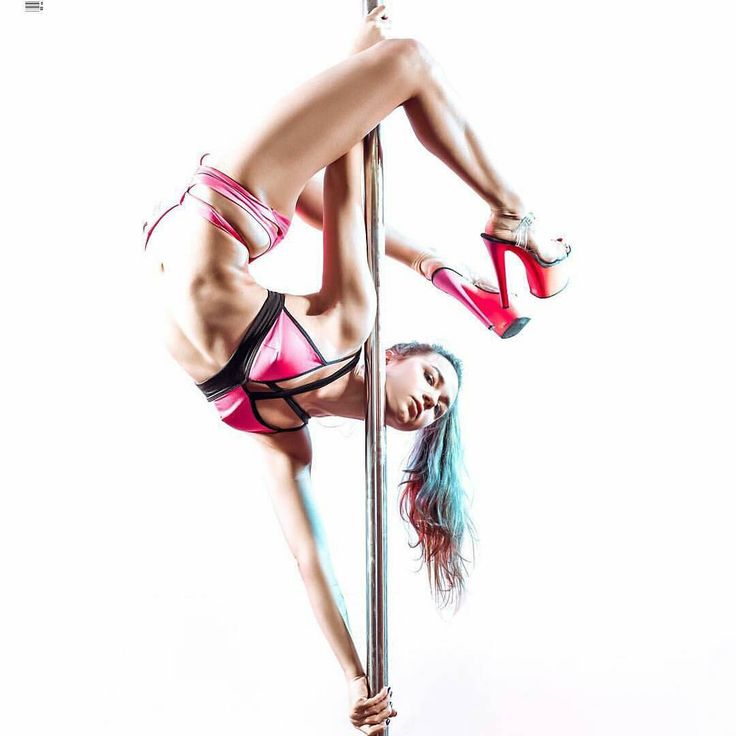 These are platform shoes with a large heel (from 1.5 to 9.5 cm). Shoes allow you to increase the force of repulsion from the ground during turns. They wear very short shorts and a top or special swimwear. There are even their non-slip fabrics.
These are platform shoes with a large heel (from 1.5 to 9.5 cm). Shoes allow you to increase the force of repulsion from the ground during turns. They wear very short shorts and a top or special swimwear. There are even their non-slip fabrics.
Injuries
Calluses and bruises are the most common. You can live with clenched teeth.
There may also be dislocations, sprains and muscle tears. It all depends on the heating and your burning. While there is no experience, you should not dress up, otherwise you will have to go to bed on sick leave
Some details and details are omitted so as not to overload the article. Only the essentials are given. In the following articles, I plan to write not only information about half-dance, but also about fitness in general. Including fitness clothing: what it is, what it consists of, etc.
Pole dance can be divided into two main areas:
Pole dance
Pole dance , pylon dance, ing pole dance) is a type of dance in which the artist performs on one or two pylons (poles), combining elements of choreography, gymnastics and acrobatics.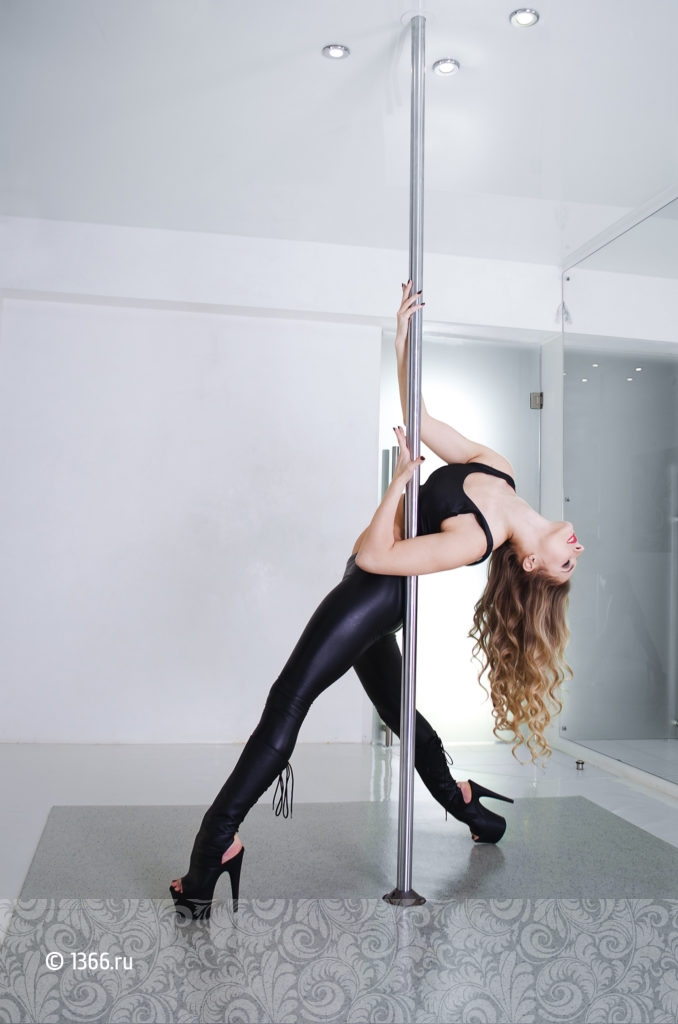 Since the 2000s, it has also developed as a form of acrobatics not directly related to the exploitation of sexuality. It is often mistakenly confused with striptease.
Since the 2000s, it has also developed as a form of acrobatics not directly related to the exploitation of sexuality. It is often mistakenly confused with striptease.
Pole dance can be divided into two main areas:
A separate sports area - pole sport or pole sport, is part of the disciplines of aerial athletics, is developing as an independent sports area. Competitions in this discipline are held on sports grounds certified by judges, according to approved rules, and the performance of each participant contains a mandatory set of gymnastic, acrobatic elements, transitions and transitions. Participants of these competitions perform in tracksuits accompanied by musical accompaniment.
Finally, we have something special in store: the most delicious videos of professional pole dancers performing. Watch and enjoy :)
Pole Dance (Paul Dance)
Pole Dance (from the English pole - pole and dance - dance) - a spectacular dance at the intersection of choreography, gymnastics and aerial acrobatics.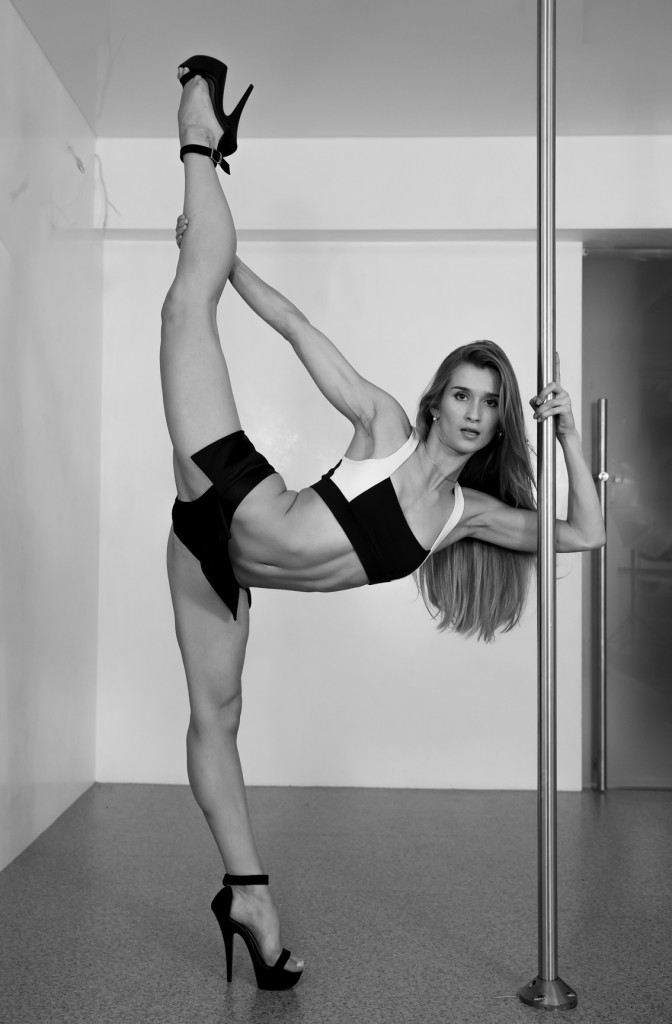 Since the 2000s, pole dance has been actively developing as a form of acrobatics, sports and fitness, with an emphasis on demonstrating the dancer's choreographic skills and technique. We will discuss the prospects for this direction below.
Since the 2000s, pole dance has been actively developing as a form of acrobatics, sports and fitness, with an emphasis on demonstrating the dancer's choreographic skills and technique. We will discuss the prospects for this direction below.
Peculiarities of Pole Dance
Pole and its role in Pole Dance
The pole dance apparatus, for all its simplicity, requires separate words. The pylon is a polished hollow tube with a diameter equal to or greater than 40 mm, which must provide the necessary gliding and, at the same time, good grip in direct contact with the skin to fix the position of the dancer.
I am half dancer, legs outstretched, rope.
Like a pylon, I am slim, elegant, slim.
Hanging me upside down is no problem.
Or, after you've circled, perform a power stunt.
© Igor Bolshakov.
Modern technologies make it possible to install pylons in any premises, including private apartments. Pylons differ in the method of fastening (fixing) to the support, they are static and rotating.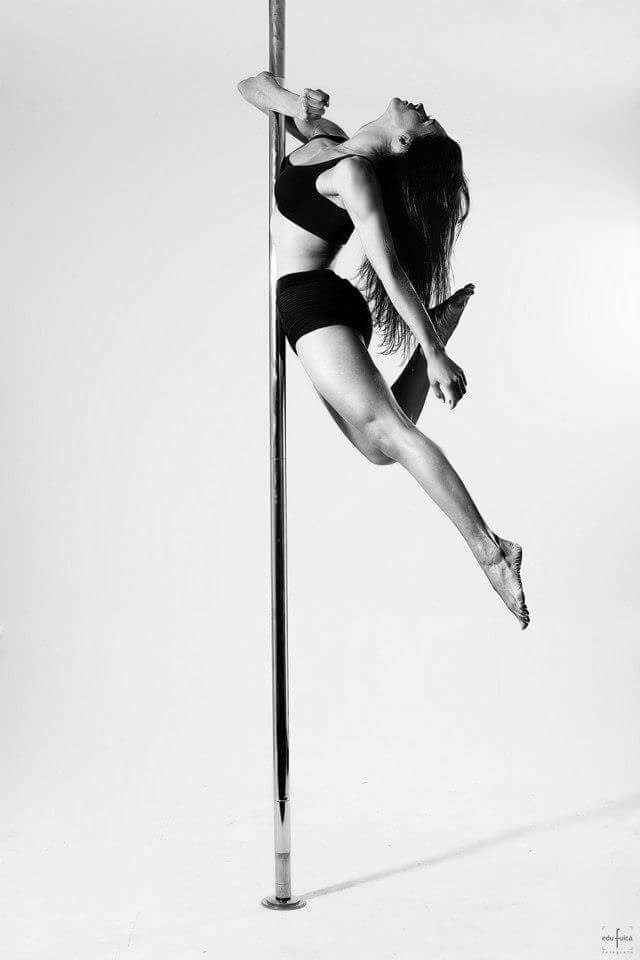 Rotating rods provide great dynamics and spectacular movements. At the upper level of the pylon (2 meters or more) tricks are performed, at the middle level (up to one and a half meters) - rotations and various dynamic movements (turns, flights, etc.), the lower level (ground floor) Consists of performing plastic and acrobatic elements in the stalls.
Rotating rods provide great dynamics and spectacular movements. At the upper level of the pylon (2 meters or more) tricks are performed, at the middle level (up to one and a half meters) - rotations and various dynamic movements (turns, flights, etc.), the lower level (ground floor) Consists of performing plastic and acrobatic elements in the stalls.
Pole Dance: a bit of history
Historically, Western civilization has associated Pole Dance with erotic performances for men. For the foreseeable past, the dance is of American-Canadian origin, but its roots go further east, deeper into Chinese circus acrobatics and the ancient Indian practice of mallakhamba training. Pole performances can still be seen in Asian circuses, but the Chinese pole is significantly different from that used in pole dancing. As a sports, acrobatic and fitness dance direction, Pole Dance is in its infancy and is experiencing a boom in popularity.
Since 2003, pole dancing has officially come out of the sunset of nightlife: competitions and championships have been held in the discipline. In addition, a certain code has already been formed: the organizers have clearly distinguished between the concepts of strip plastic and pole dance: any revealing outfits, gestures, etc. are prohibited in performances. Even striptease is prohibited in Pole Sport: all attention should be focused ONLY on the athleticism of the dancer, which should be able to "purely" execute program elements and make interesting connections between them. World Championships are held at the initiative of World Pole Sport & Fitness and the International Pole Sports Federation.
In addition, a certain code has already been formed: the organizers have clearly distinguished between the concepts of strip plastic and pole dance: any revealing outfits, gestures, etc. are prohibited in performances. Even striptease is prohibited in Pole Sport: all attention should be focused ONLY on the athleticism of the dancer, which should be able to "purely" execute program elements and make interesting connections between them. World Championships are held at the initiative of World Pole Sport & Fitness and the International Pole Sports Federation.
Since 2008, Pole Dance competitions have also been held in Russia. For the first time, the competition was held in St. Petersburg, and a Ukrainian woman with a wonderful national name Vardanush Martirosyan won. Pole dance continues to develop: pole dance lessons for children are being opened, you can see impromptu performances in the open air, and even an underwater version of pole dance has appeared.
My life without dancing is sad and boring.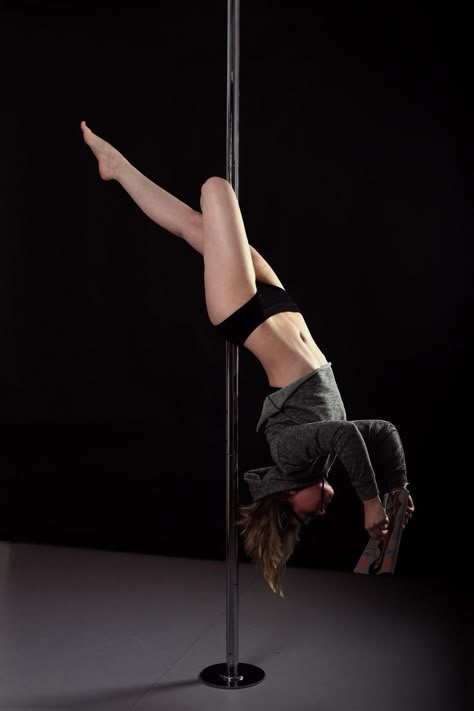
I'd give anything in the world for a pylon.
Blood boils, emotions boil in it,
My goal is to become a Pole Art champion.
© Igor Bolshakov.
Types of Pole Dance
- Pole Sport - the most "serious" direction of pole dance: pole sport refers to aerial athletics, competitions in disciplines are held on sports grounds and are evaluated by certified referee teams according to approved rules. Each performance contains a mandatory set of gymnastic elements, connections and transitions. Competitors perform in tracksuits accompanied by musical accompaniment on two types of pylons, alternating them during the performance of the program to demonstrate different skills. Pole Art is an artistic dance with a pole and a choreographic program that includes certain elements. Competitions are held according to discipline, where acting qualities, directing, as well as acting skills and suitability of costumes for the chosen image of the speaker are evaluated.
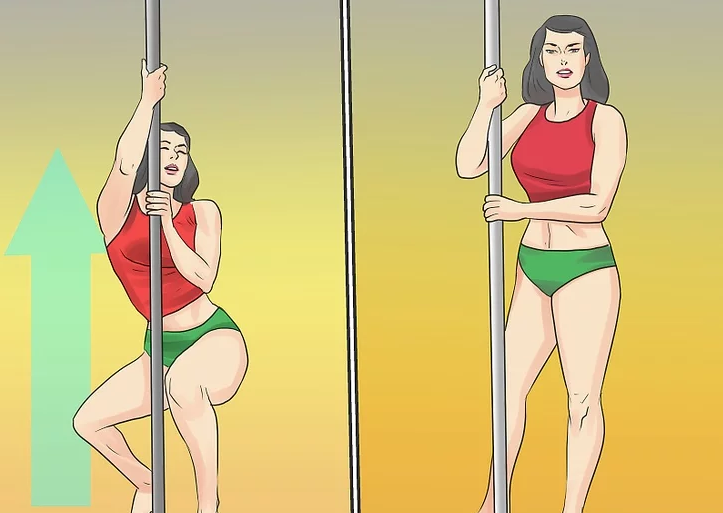 To better understand the difference between art and sport, we can compare them to ice dancing and figure skating. Exotic Pole Dance - dance contains less acrobatic component, but more erotic plasticity, has a pronounced entertaining character. Pole Fitness is an amateur style of pole dancing taught in very specialized fitness centers.
To better understand the difference between art and sport, we can compare them to ice dancing and figure skating. Exotic Pole Dance - dance contains less acrobatic component, but more erotic plasticity, has a pronounced entertaining character. Pole Fitness is an amateur style of pole dancing taught in very specialized fitness centers. How Pole Fitness Works Out
- The first 5-10 minutes are dedicated to warming up, which is necessary to warm up the main muscle groups and joints involved in Pole Fitness. The next 10 minutes are devoted to strength balance exercises on the pole. The main part of the lesson lasts 40-45 minutes and during this time the girls work out various acrobatic and choreographic elements - turns (turns), various combinations of tricks. The next 5-10 minutes are allotted for improvisation using the studied elements with musical accompaniment. Stretching completes the workout, which takes 20-30 minutes of training time. Stretching is necessary for a half-dancer to master the splits and other acrobatic dance elements.
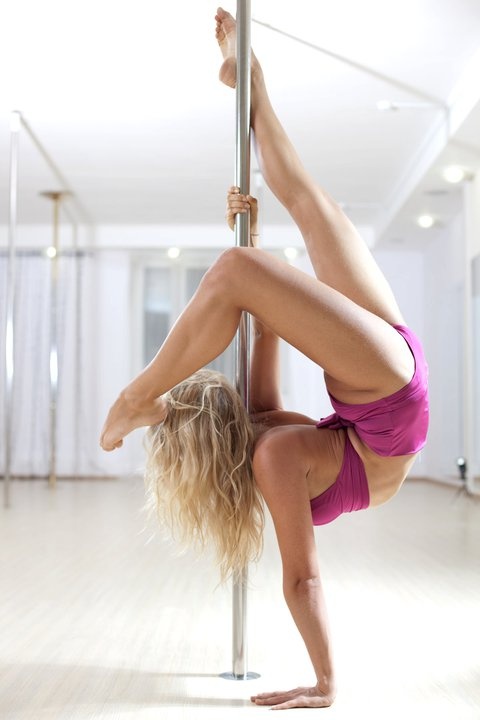
The group is selected small and strictly according to the number of shells in the room. In a self-respecting educational institution, no more than one student per pole is allowed. When practicing acrobatic elements on the pylon, the master provides insurance for beginner dancers, shock-absorbing mats are additionally used. Classes are held barefoot or in special light shoes with high heels (more advanced level). Gyms and dance studios provide an individual approach to everyone, regardless of age and fitness level. Also, many schools promise their students a real opportunity to participate in Pole Dance competitions.
Elements
There are three types of items in Gender Fitness:
Elements for flexibility: longitudinal and transverse slots, arrows of different depths, folds. Items of Power: Various grips and flags that require some balance and limb strength. Point elements: holding the body on the pole with the help of various parts of the body: knees, elbows, hips or a combination of certain types of grips.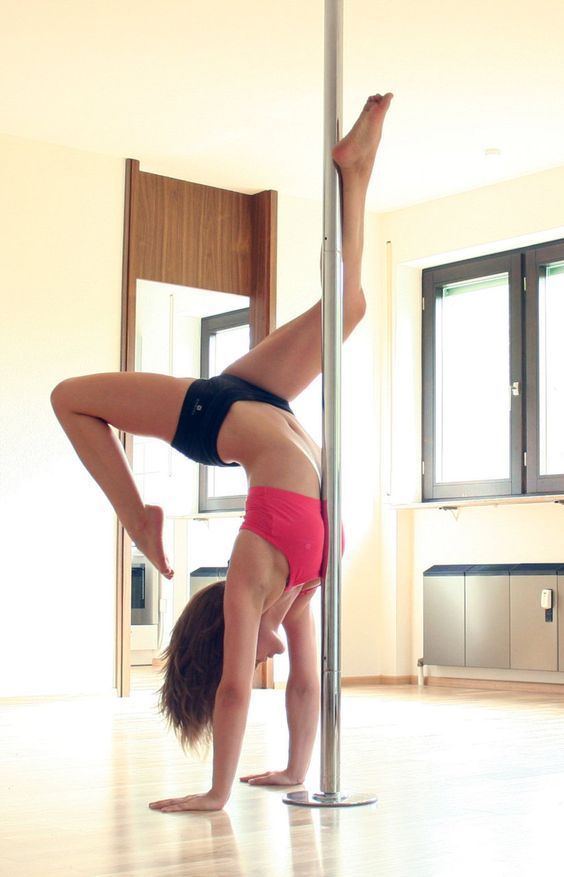
Pole Fitness Benefits
Regular Paul Fitness can help you achieve:
- Resistance and good coordination. A lot of dynamic pole dance movements develop dexterity, train the vestibular apparatus and a sense of balance.
Strong muscles and tone of the whole body. Maintaining your own weight in various positions contributes to the development and strengthening of muscles.
Flexibility and mobility of the articular-ligamentous apparatus. Finally, you are sitting on a rope :)
Persistence, strength of character and the ability to overcome difficulties.
Increasing self-esteem, self-confidence and just a good mood.
Pole Fitness: disadvantages
A significant disadvantage of pole dance is the high cost of a subscription compared to other types of group training. (But it’s better to choose a specialized studio with professional choreographers and “overpay” than to stand in line for a pole: this also happens).
Hyperhidrosis (excessive sweating) is a physiological characteristic that can come as an unpleasant surprise when using a cane.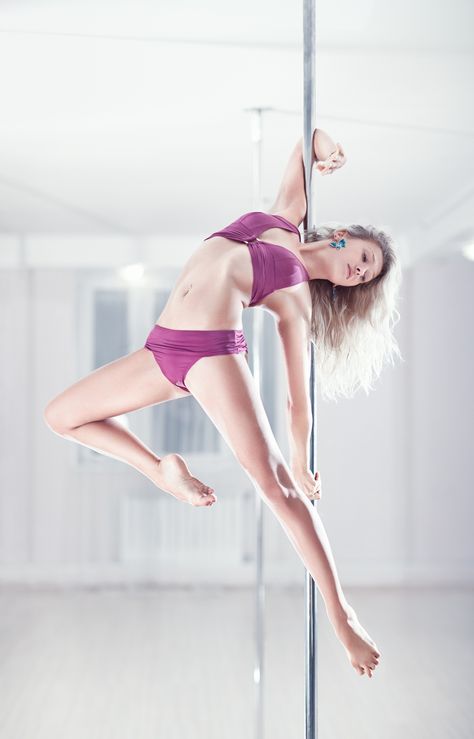 Simply put, if your palms sweat a lot, then it will be difficult to perform grips with your hands, your hands will slide. To solve this problem, it is enough to use sports magnesia.
Simply put, if your palms sweat a lot, then it will be difficult to perform grips with your hands, your hands will slide. To solve this problem, it is enough to use sports magnesia.
Fear is a frequent companion for beginners. Fear of injury, fear of heights, fear of an unusual body position (for example, hanging upside down). This is a natural self-preservation emotion that wears off as the athletic experience increases.
Be prepared for bruises - they are bound to happen, every successful pole dancer has been through this. If you can’t imagine your life without a miniskirt or bruises on your skin for a long time, then this can become a problem. Stock up on patience and ointments that promote the resorption of bruises (badyaga, troxevasin, etc.).
Pole Dance: contraindications
Here's what they say about their passion for pole dancing
(irecom reviews):
And men, for example, consider pole dancing to be the best sport for a girl! Still, is there such a representative of the stronger sex who would not dream of an ideal stretch for his half?
Pole dance: motivation.

Videos of the best performances
Finally, we have something special in store: the most "delicious" videos of professional pole dancers' performances. Watch and enjoy :)
It's good that you are sitting.
Hold on tight to your chair, because this video with Polina Volchek is just SOMETHING!
Stock up on Validol because your heart will need something to calm it down.
Pair performance. Amazing.
The men are not far behind either.
Christian Lebedev as a Spartan. Strongly.
Well, who will say now that Pole Dance is easy or vulgar? Pole dance is a real art of strong and beautiful men and women. And yet, we cannot disappoint the expectations of those who were waiting for "peppercorns": we guarantee you that you have not seen Hannibal Lecter like this before:
Strip plastic - erotic dances aimed at developing sensuality, femininity and emancipation. This is no longer a sport, but a hobby, the art of owning one's own body and seduction.
In strip plastic surgery of ligaments, a pylon can be used, but as an auxiliary element. Its presence is not at all necessary, like any other accessory. The main tool here is the female body, and everything else only emphasizes it and helps to open up.
Finding the difference
To begin with, let's delimit strip plastic and pole dance from striptease. In them, the dancers are not naked, which is the main and main difference. Now we can talk about how these two addresses differ:
- Versatility. Strip plastic is a direction that is purely female in nature, while women, men and even children can practice Pole Dance. The nature of dance. The plasticity of a striptease is destined to seduce, while the pole dance demonstrates musicality, plasticity and the ability to perform acrobatic stunts in the air. Pylon work. In strip plastic, you can do without it, but in Pole Dance you can’t. Training effect. Strip plastic frees and teaches you to understand your body, pole dancing helps to develop balance, coordination, endurance and tone all muscle groups.
 Sportsmanship. Strip plastic focuses on sexuality, emotions, art and is not a sport, while Pole dance is a direction of dance and sport.
Sportsmanship. Strip plastic focuses on sexuality, emotions, art and is not a sport, while Pole dance is a direction of dance and sport. As you can see, the difference is significant, and in order to choose the type of activity that is right for you, you need to understand it well.
In the 20th century, when the erotic industry began to gain momentum, go-go dancers appeared. It is this direction that has overshadowed the centuries-old history of pole dance, because now the first thing that comes to mind when mentioning pole dance is half-naked girls with a languid look.
Pole dance as a sports discipline
Although with the advent of go-go, society almost ceased to perceive pole dance as a serious occupation, true pole dance lovers did not give up, and since 2003 championships and competitions began to be held.
According to the official rules of pole dance, it is forbidden to expose the body and show erotic elements. This is done so that people understand that pole dancing is not so much about sexuality, but about physical training and painstaking work on your body.
This is done so that people understand that pole dancing is not so much about sexuality, but about physical training and painstaking work on your body.
In 2012 the first Pole Dance World Championship took place.
There is also the International Polo Sports Federation (IPSF). Its president, Cathy Coates, spent 11 years trying to get the discipline recognized as an independent sport. After her first success, Coates' plans have expanded significantly: now she is fighting for the inclusion of pole dancing in the Olympics program.
SportAccord, the World Association of International Sports Federations, has already given pole dancing the status of an official professional sport, albeit for only two years. During this time, Katy will have to sort out all the issues with the bureaucracy, and then we will most likely see pole dancing between the Olympic disciplines.
Historically, in Western civilization Pole Dance is associated with erotic performances for men.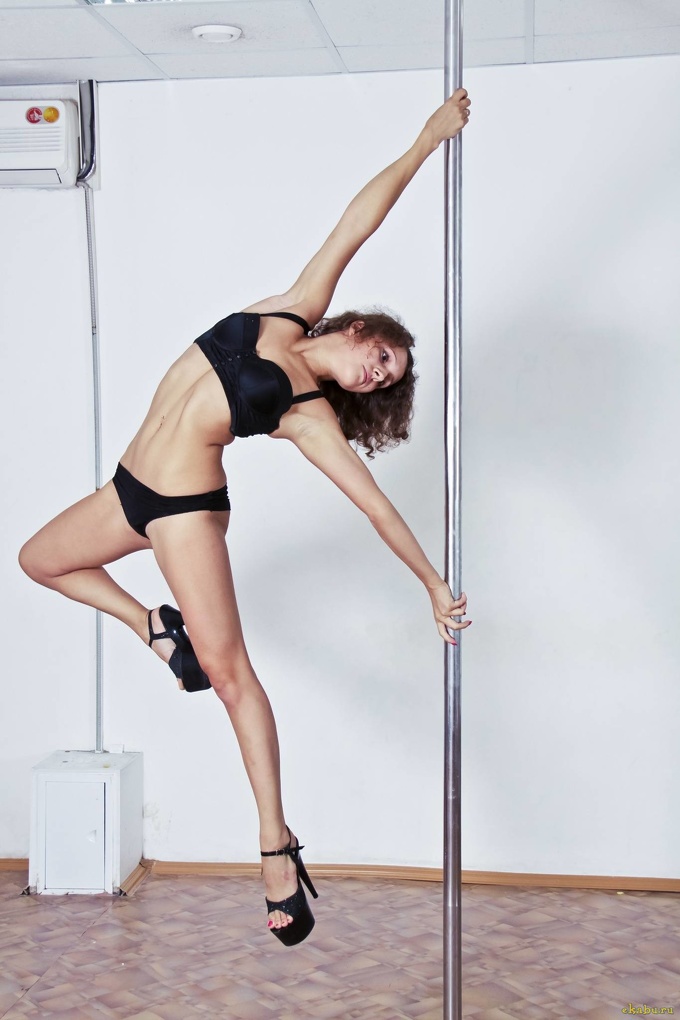 For the foreseeable past, the dance is of American-Canadian origin, but its roots go further east, deeper into Chinese circus acrobatics and the ancient Indian practice of mallakhamba training. Pole performances can still be seen in Asian circuses, but the Chinese pole is significantly different from that used in pole dancing. As a form of sports dance, acrobatics and fitness, Pole Dance is in its infancy and booming in popularity. Vlombardavto. Common crawl en Fear is a frequent companion of beginners. Fear of injury, fear of heights, fear of unusual body position (for example, hanging upside down ..
For the foreseeable past, the dance is of American-Canadian origin, but its roots go further east, deeper into Chinese circus acrobatics and the ancient Indian practice of mallakhamba training. Pole performances can still be seen in Asian circuses, but the Chinese pole is significantly different from that used in pole dancing. As a form of sports dance, acrobatics and fitness, Pole Dance is in its infancy and booming in popularity. Vlombardavto. Common crawl en Fear is a frequent companion of beginners. Fear of injury, fear of heights, fear of unusual body position (for example, hanging upside down ..
High Hills (dance in heels) - Dance Studio GOOD FOOT in Nizhny Novgorod
| Highheels - the most spectacular dance in heels! It implies choreography that is created for a specific music track.
SCHEDULE / September-December 2022
SORMOVO CENTER / Nizhny Novgorod, Yubileyny Boulevard, 32, Sormovsky DK
DK Sverdlova / Nizhny Novgorod, Bolshaya Pokrovskaya, 18
7-MICRODISTRICT / Nizhny Novgorod, Zaytseva St., 15a, shopping center "Sputnik"
MESCHERA / Nizhny Novgorod, Karla Marksa St.
How the lesson goes
The high heels lesson lasts 1 hour. At the beginning of the lesson, the muscles, ligaments and joints are necessarily warmed up. The main time of the lesson is devoted to the study of choreography and technique, and at the end of the lesson, time is given to stretching and pumping the body. In addition, exercises are periodically given, or even entire classes are devoted to the development of musicality, improvisation, and so on.
What to bring to classComfortable clothes and shoes that are comfortable to move in. As for clothing, it can be leggings and a T-shirt, a T-shirt and shorts. Shoes with heels are desirable, but if this is your first time coming to class, you should bring flat shoes with you.
You can sign up for the group at any time - we have a constant recruitment.
The effect of the classes High Hills classes develop a sense of rhythm and musicality, this style will teach you how to dance in heels better than walking! In addition, high heels strengthen many of the muscles of the body and the health of the body as a whole.
What awaits you besides training in the hallShooting dance video clips, joint trips to master classes, photo shoots, performances at the two largest reporting concerts of the Good Foot studio and other events in our city, participation in competitions, performances and work in clubs. Coming to class, you will find yourself in a real dance family!
What is High Heels?High Heels - the style of the real stars of the dance scene! Everyone knows that high heels have magical powers. They not only make the legs longer and slimmer, but as an attribute of the dance, they certainly cause respect and a natural question: “How do they do it ?!”. If you want to learn how to dance in high heels, come to class and we will reveal all the secrets. High heels - the most spectacular dance in heels! It implies choreography that is created for a specific music track. Having discovered this style for yourself, you will not remain indifferent, you just have to try it. Self-confidence, sexuality, sensuality, audacity - these are all High heels. This style is performed exclusively in high heels.
Origin:Andy Jay is considered the founder of high heels. Andy Jay, a choreographer from Los Angeles, came up with the idea to perform a heel dance. She began filming and posting videos of dancing sheaves in heels on the Internet. This idea was supported and developed by other choreographers. Now this catchy style is incredibly popular and has already managed to win an army of fans and fans around the world.
Photos and videosClass videos >>>
Coaches Anastasia Pshechuk Pryanikova Anna Korneeva Evgenia Leave a request
Your applications are also accepted by by phone (831) 235-00-25 or through Online Consultant (in the lower right corner). |
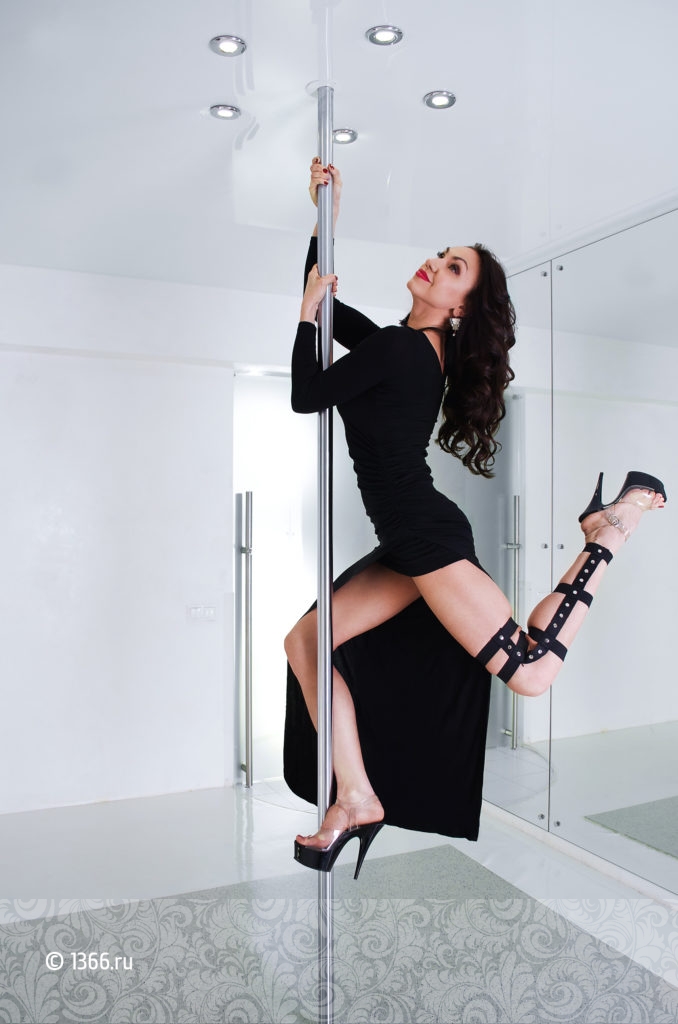 Having discovered this style for yourself, you will not remain indifferent, you just have to try it. Self-confidence, sexuality, sensuality, audacity - these are all Highheels. Perform this style exclusively in high heels.
Having discovered this style for yourself, you will not remain indifferent, you just have to try it. Self-confidence, sexuality, sensuality, audacity - these are all Highheels. Perform this style exclusively in high heels. 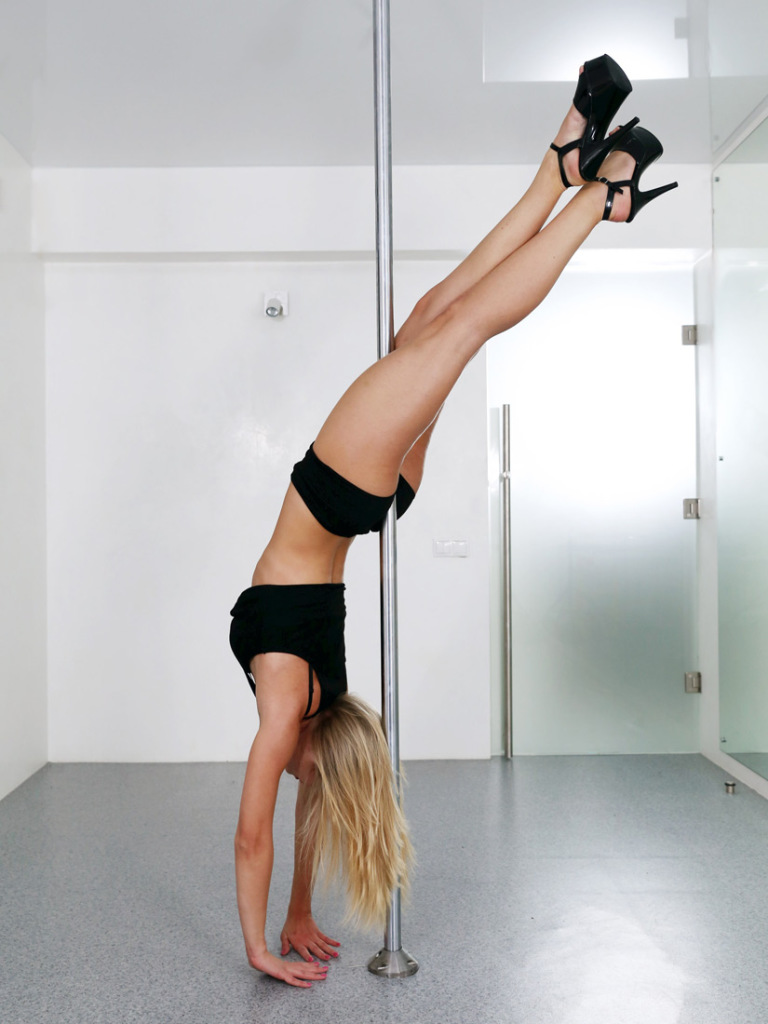 5 hours
5 hours 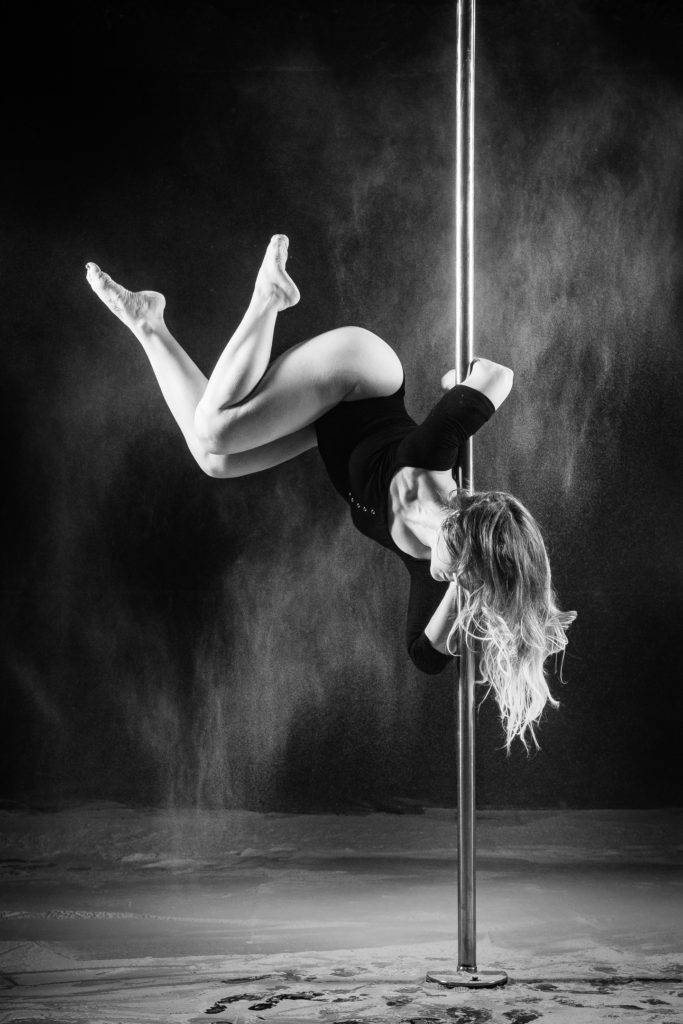 , 19
, 19 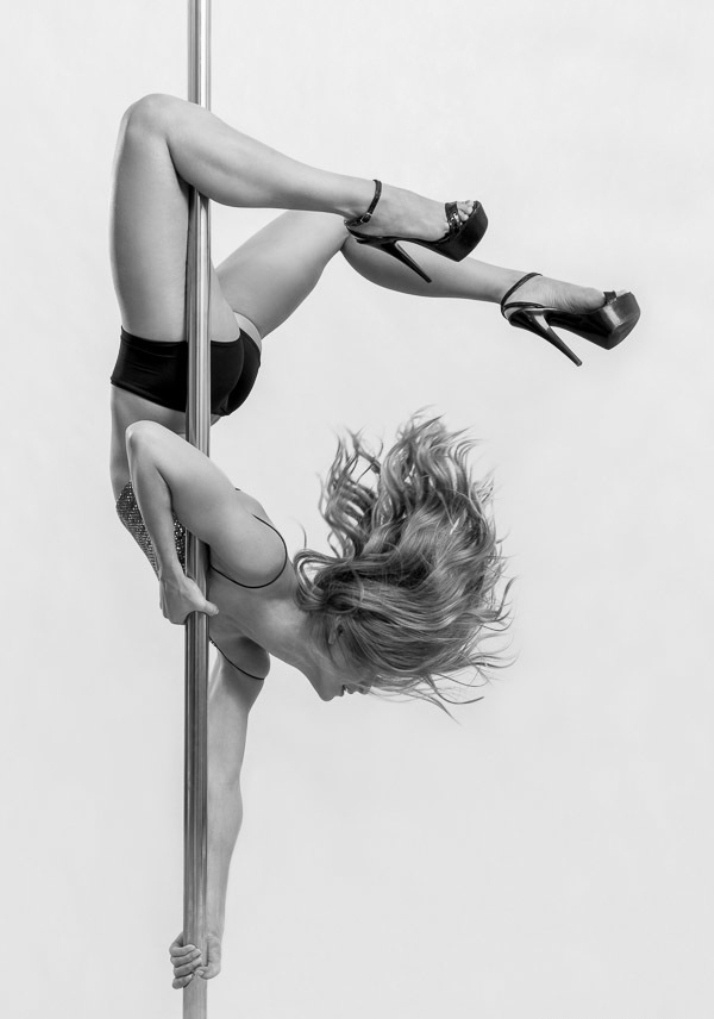 Dance helps to develop many qualities: sensuality, plasticity and grace, and many other qualities, without which the manifestation of femininity is impossible. Also in the classroom you will get a good stretch and a pumped-up embossed body.
Dance helps to develop many qualities: sensuality, plasticity and grace, and many other qualities, without which the manifestation of femininity is impossible. Also in the classroom you will get a good stretch and a pumped-up embossed body. 

